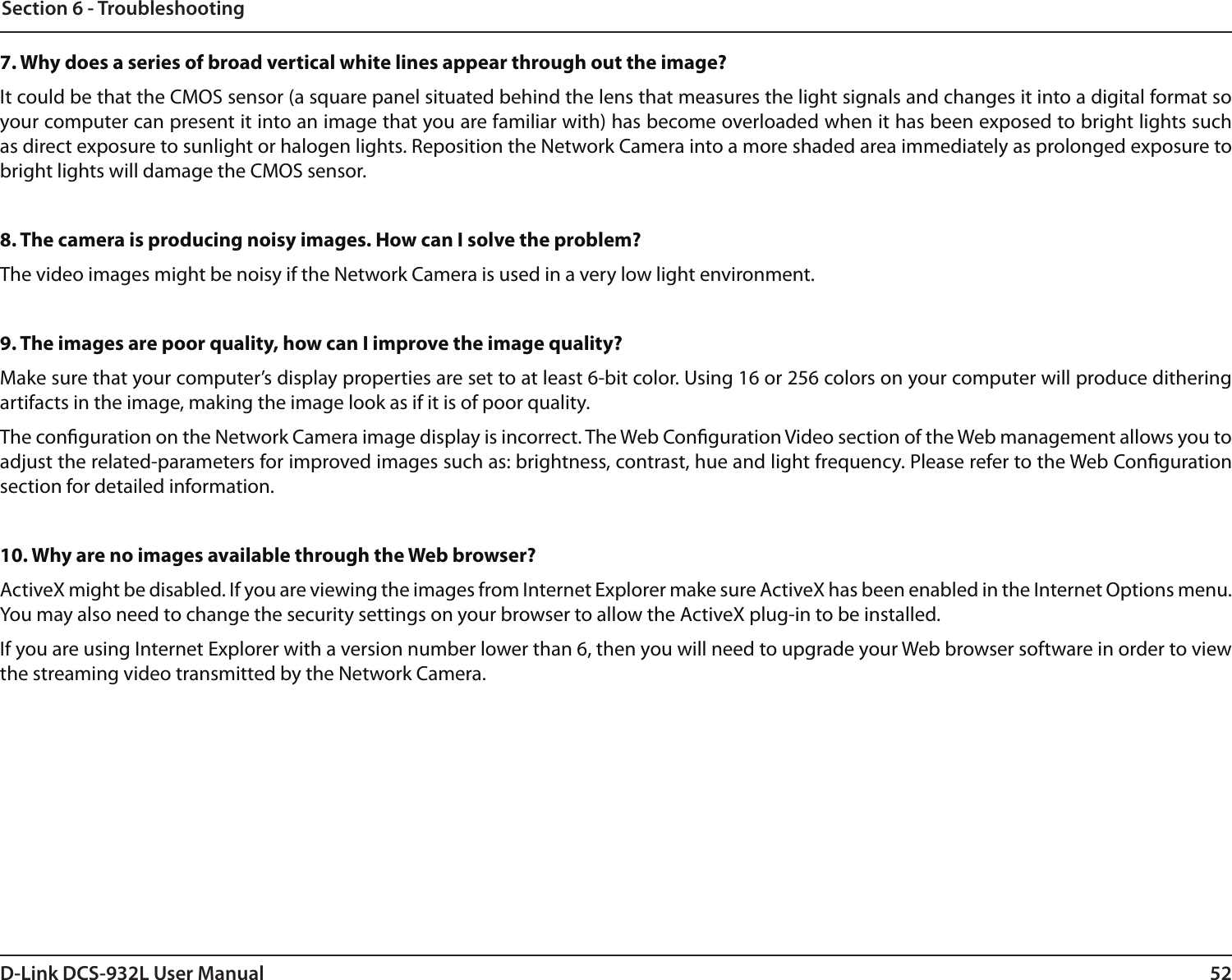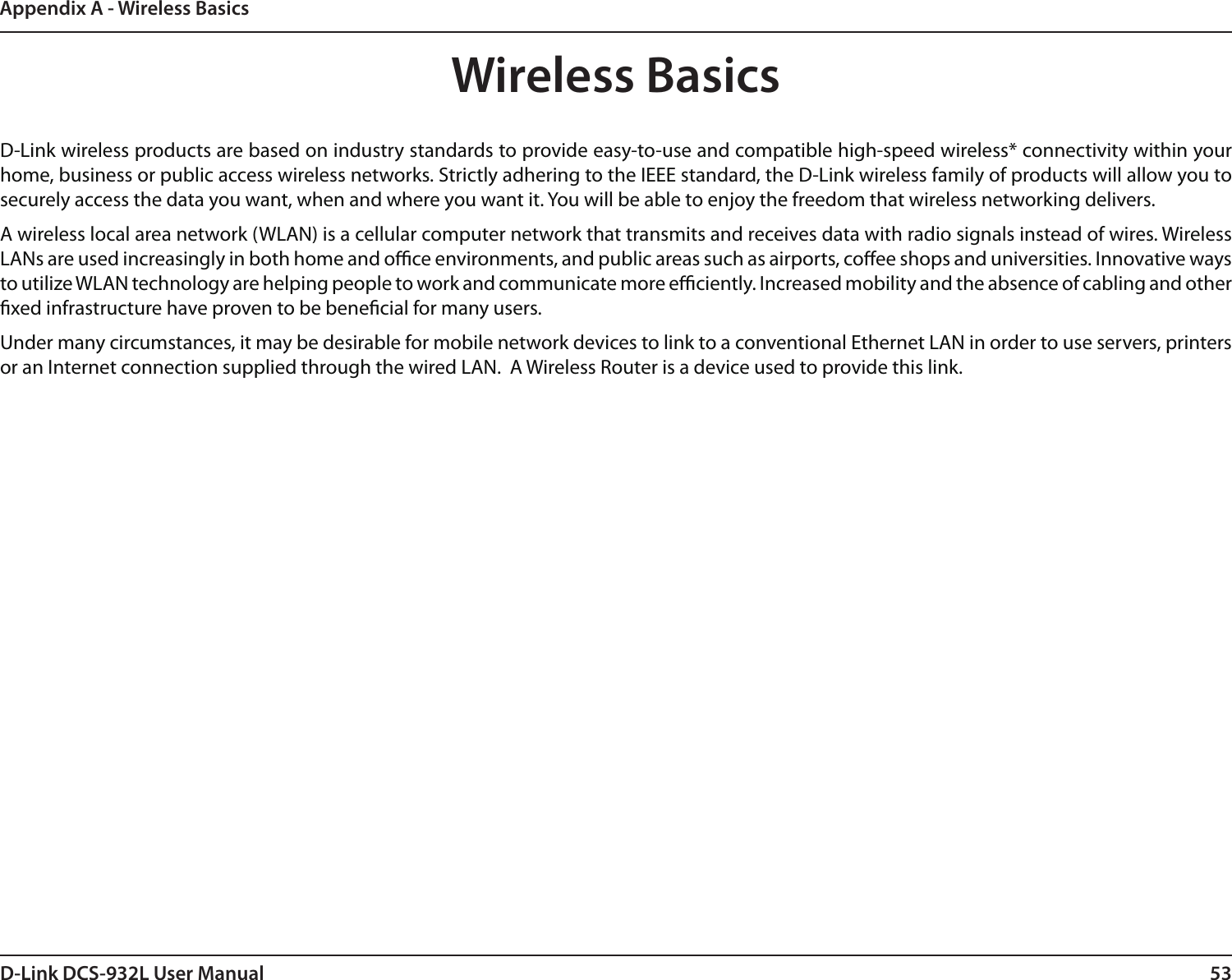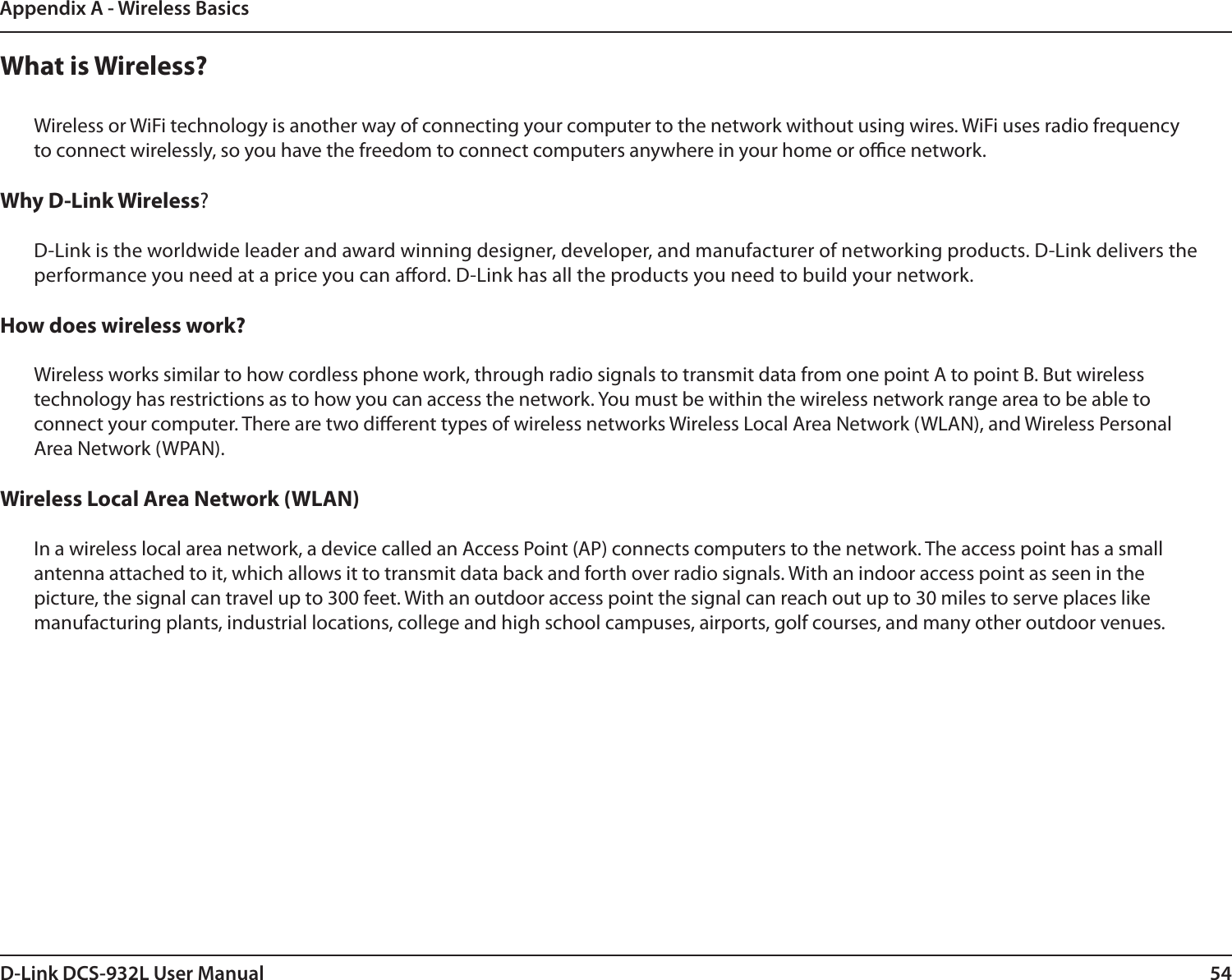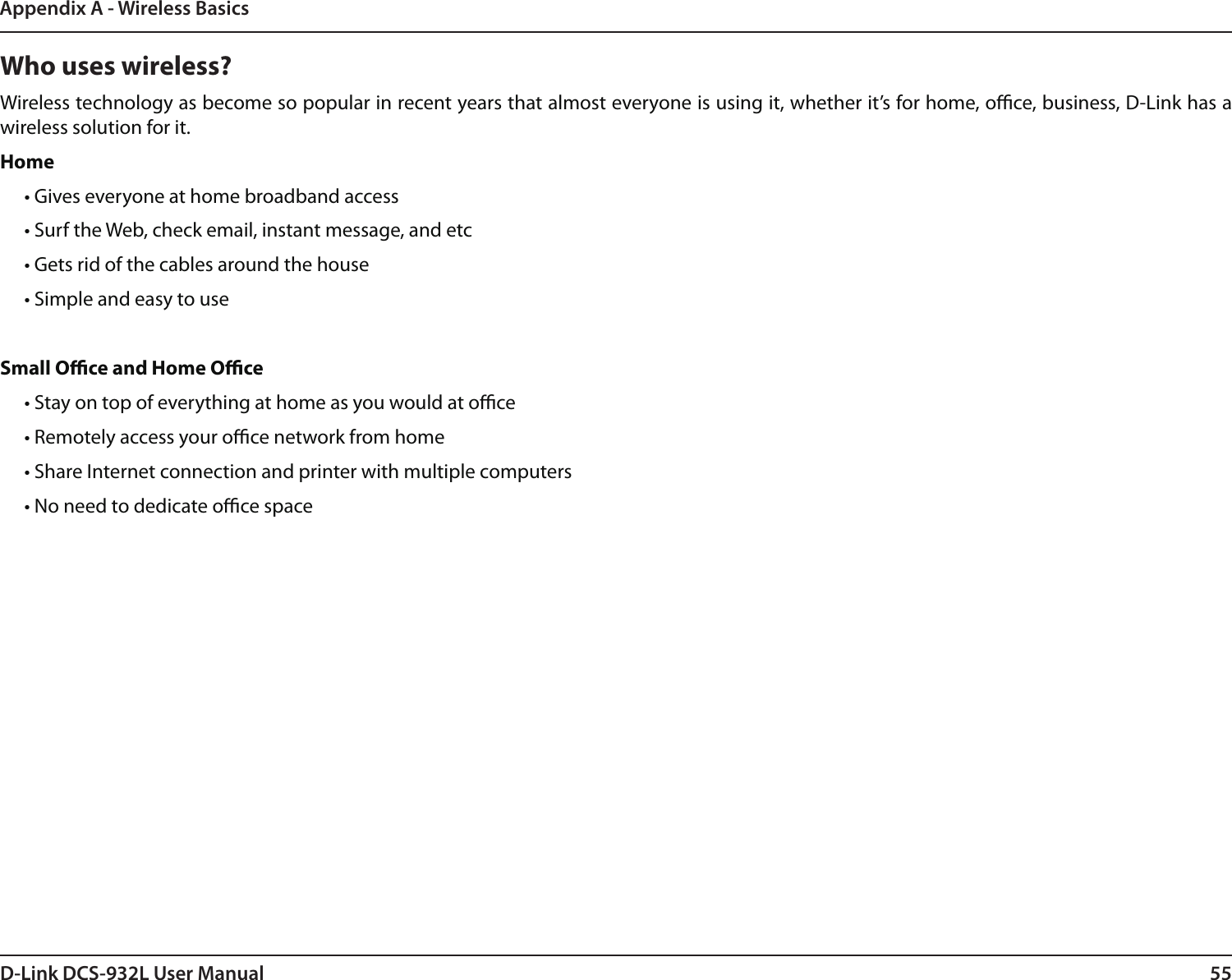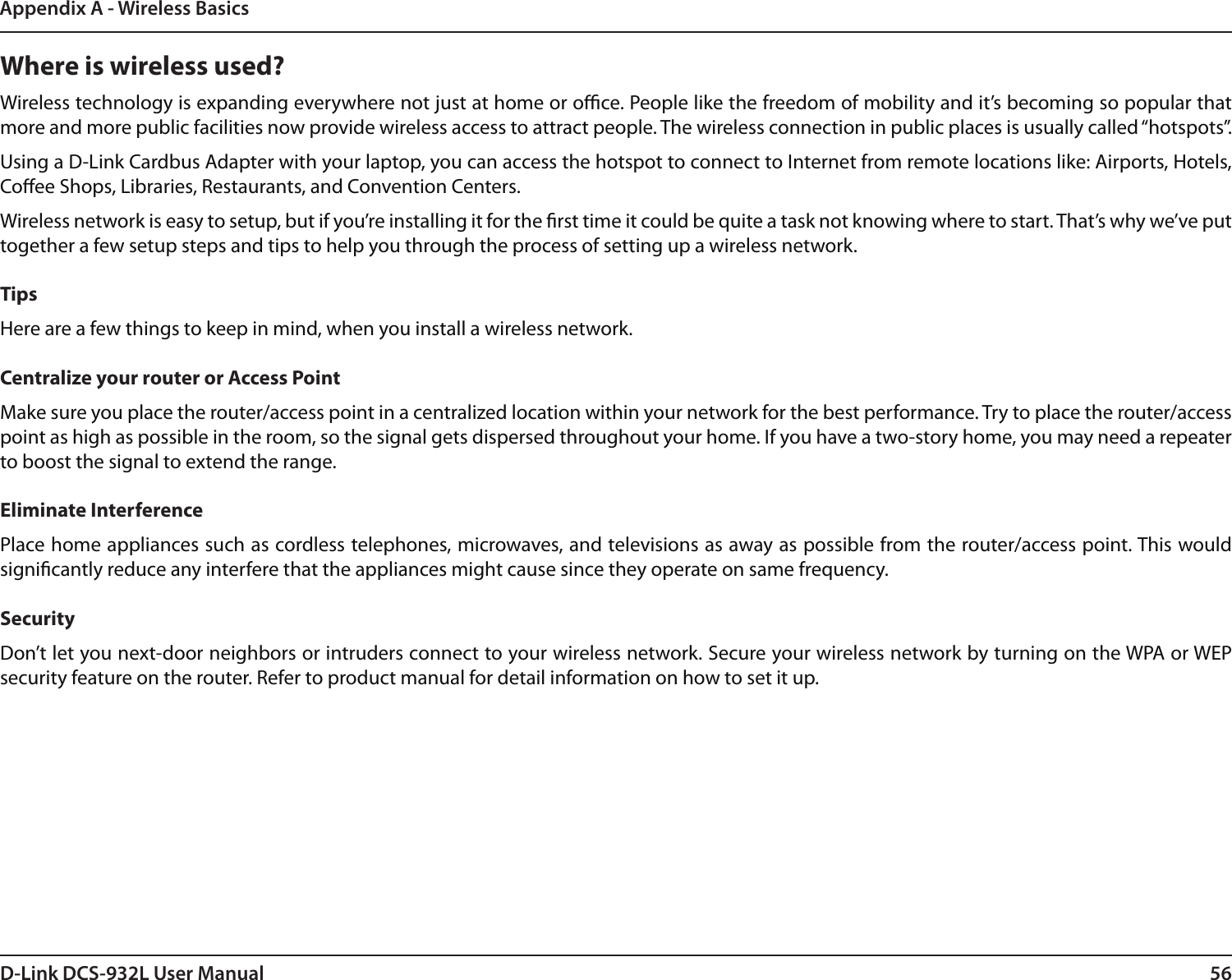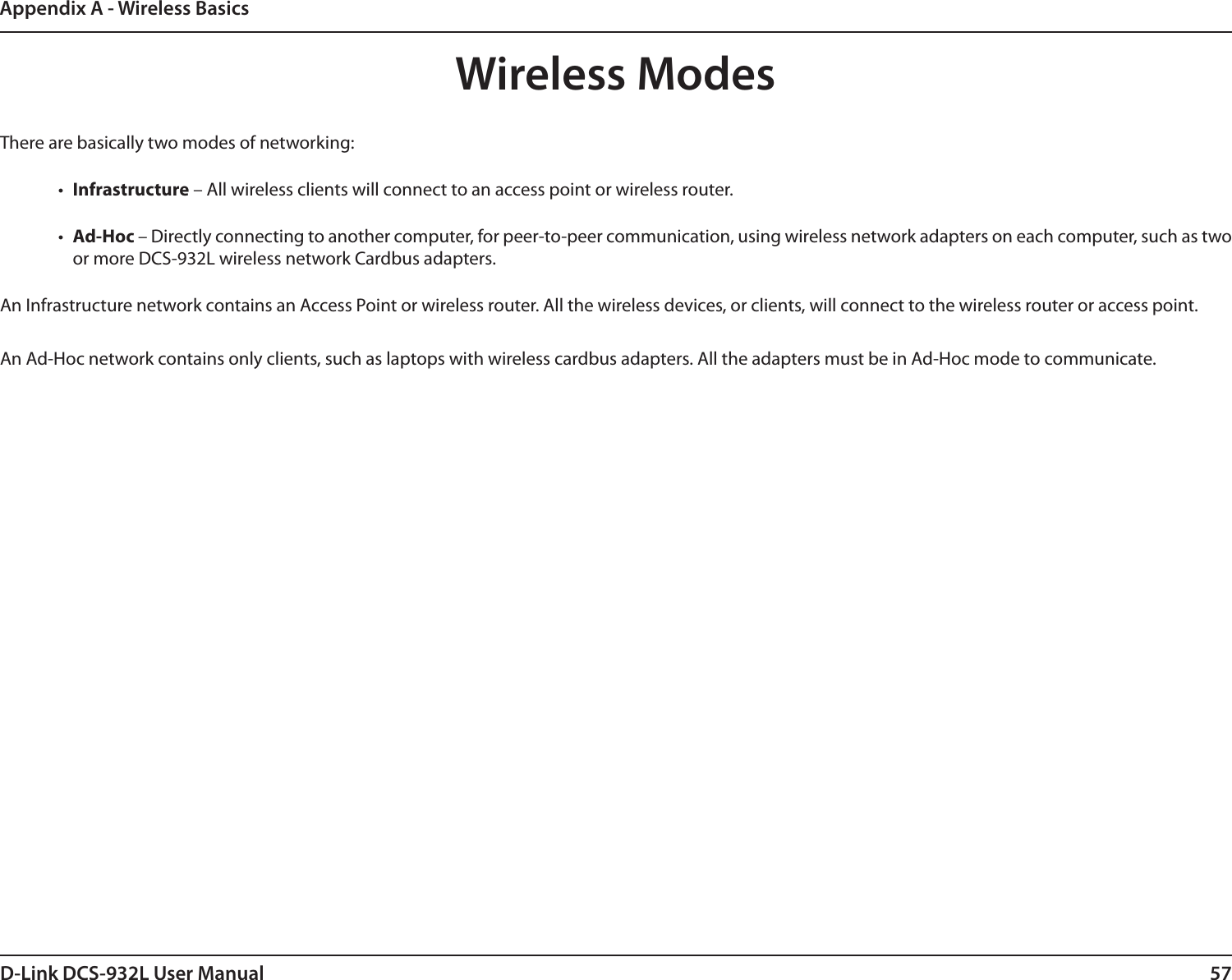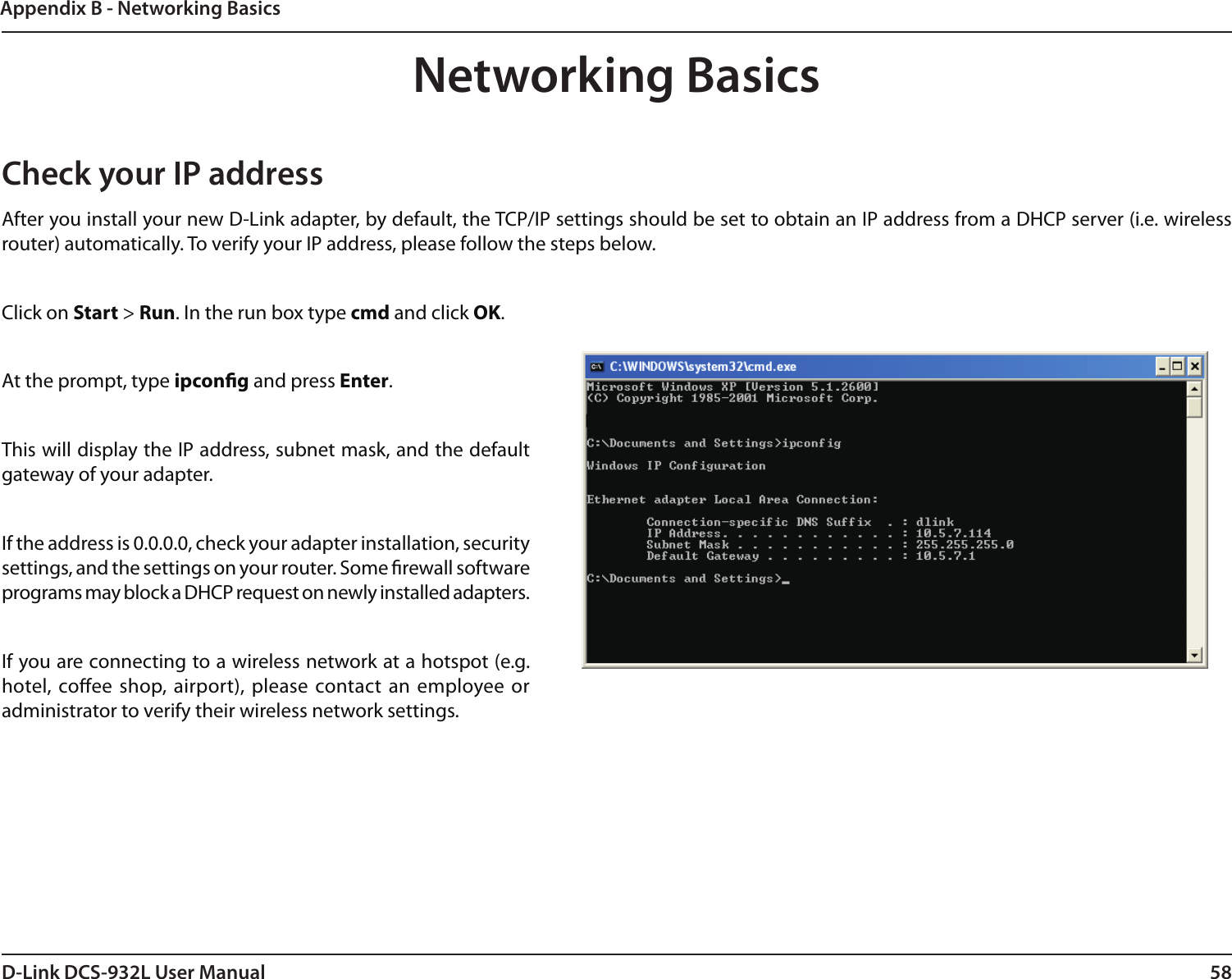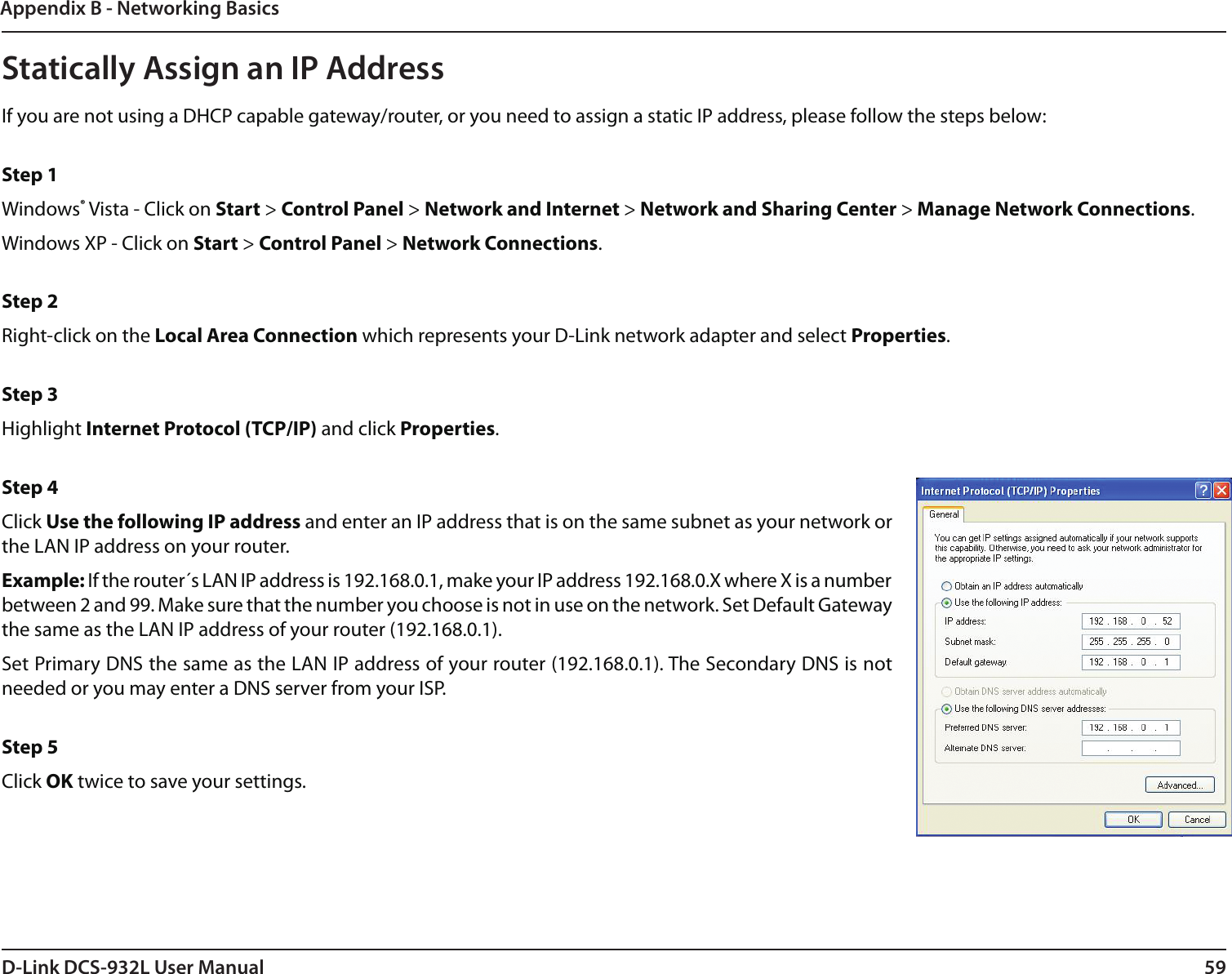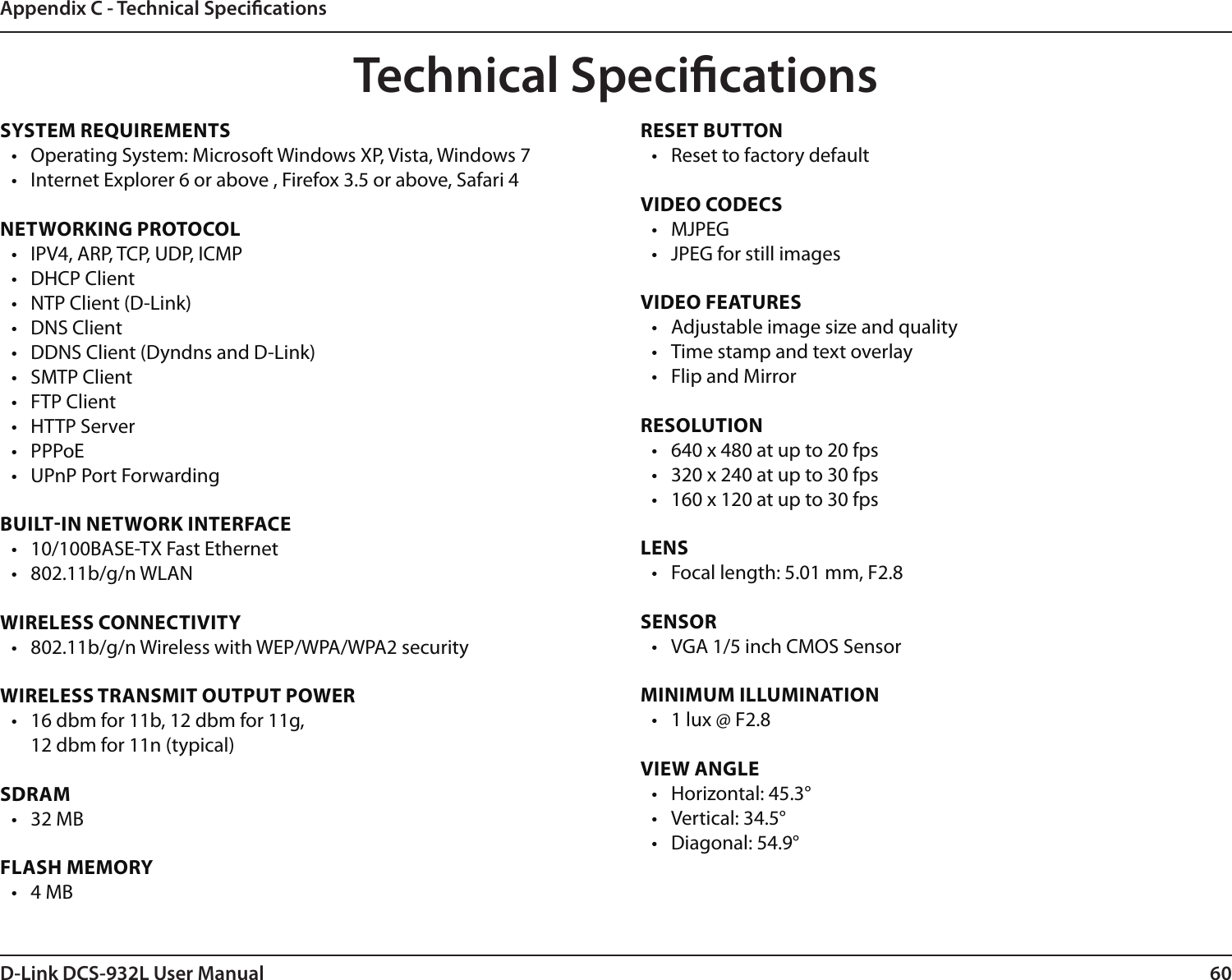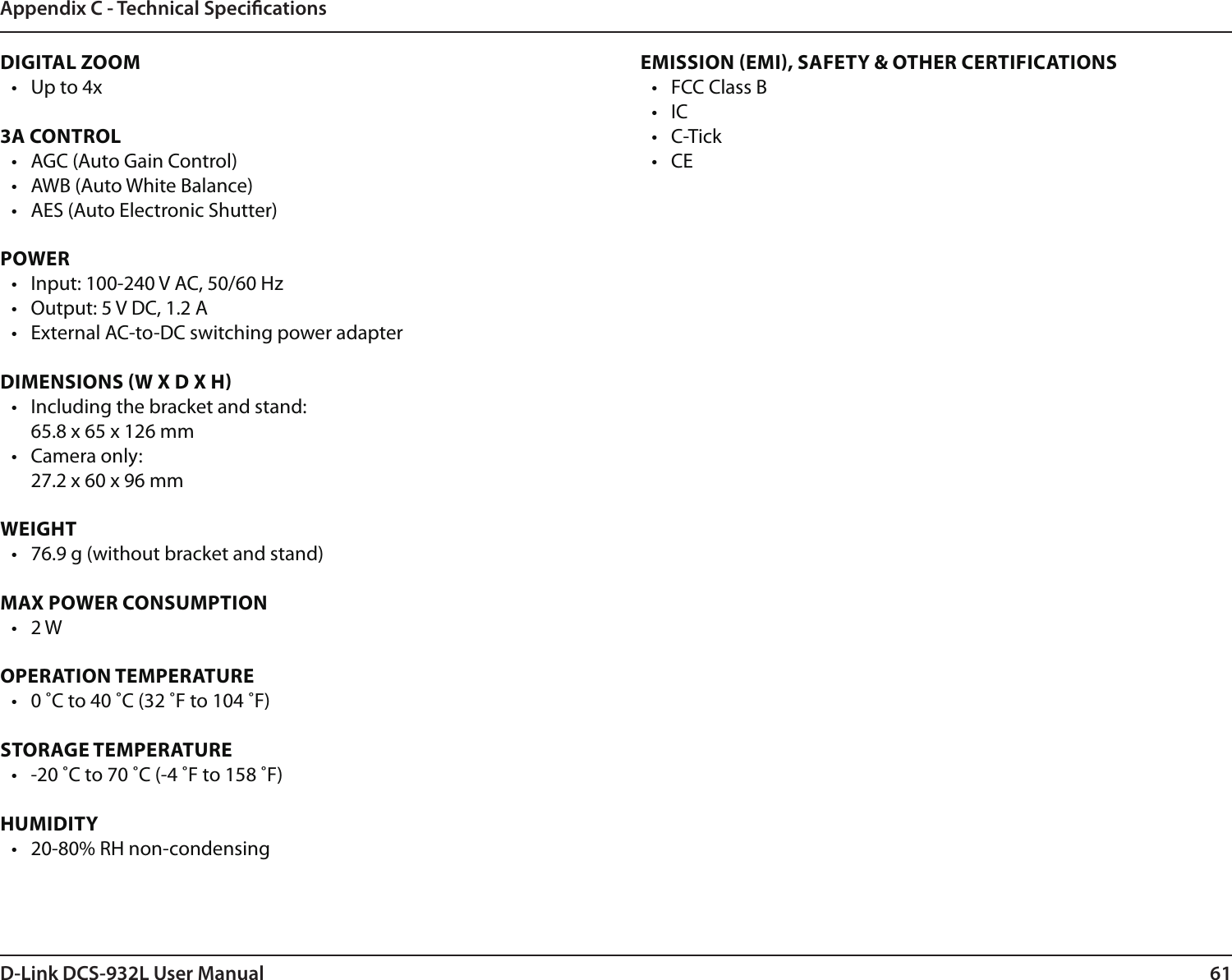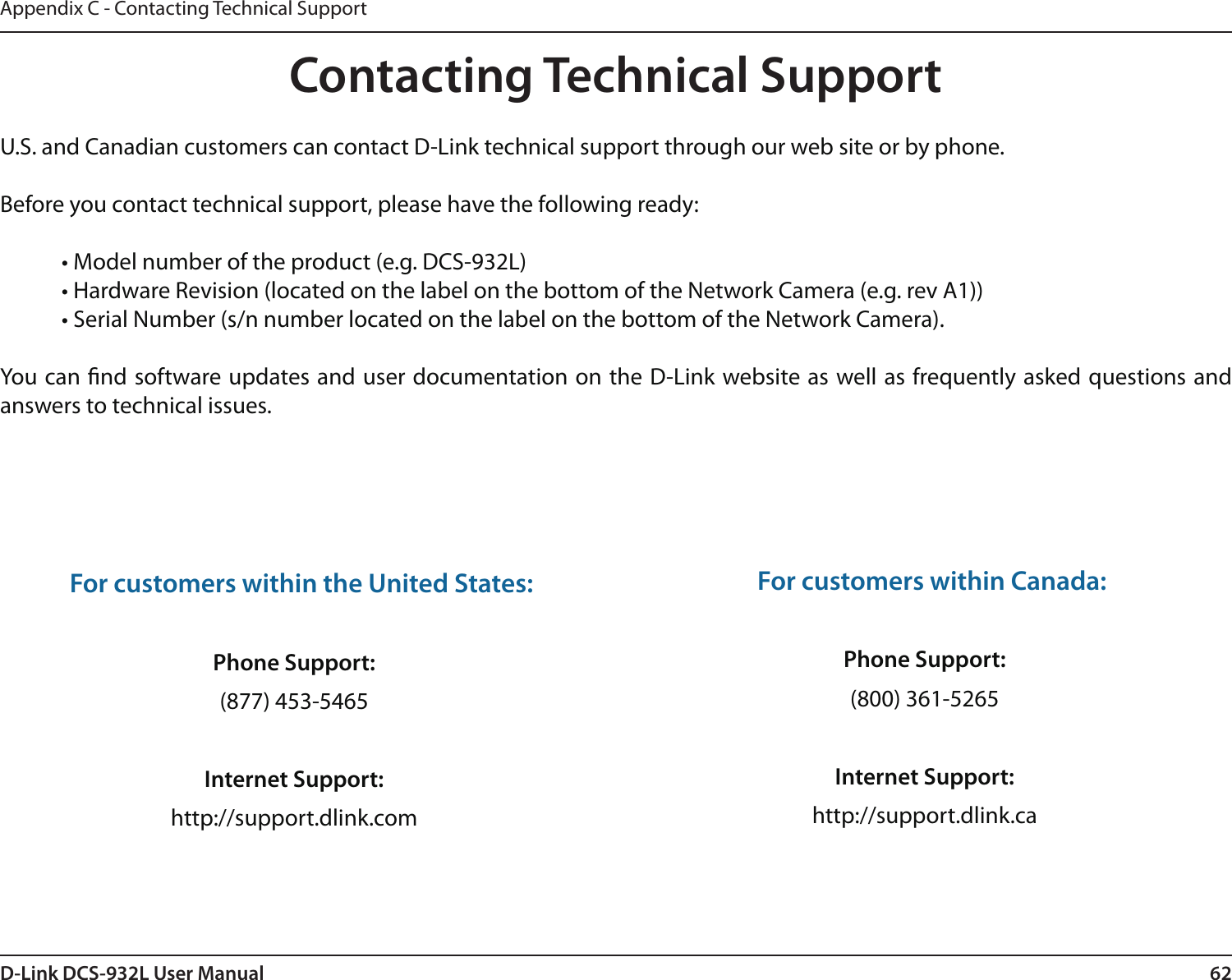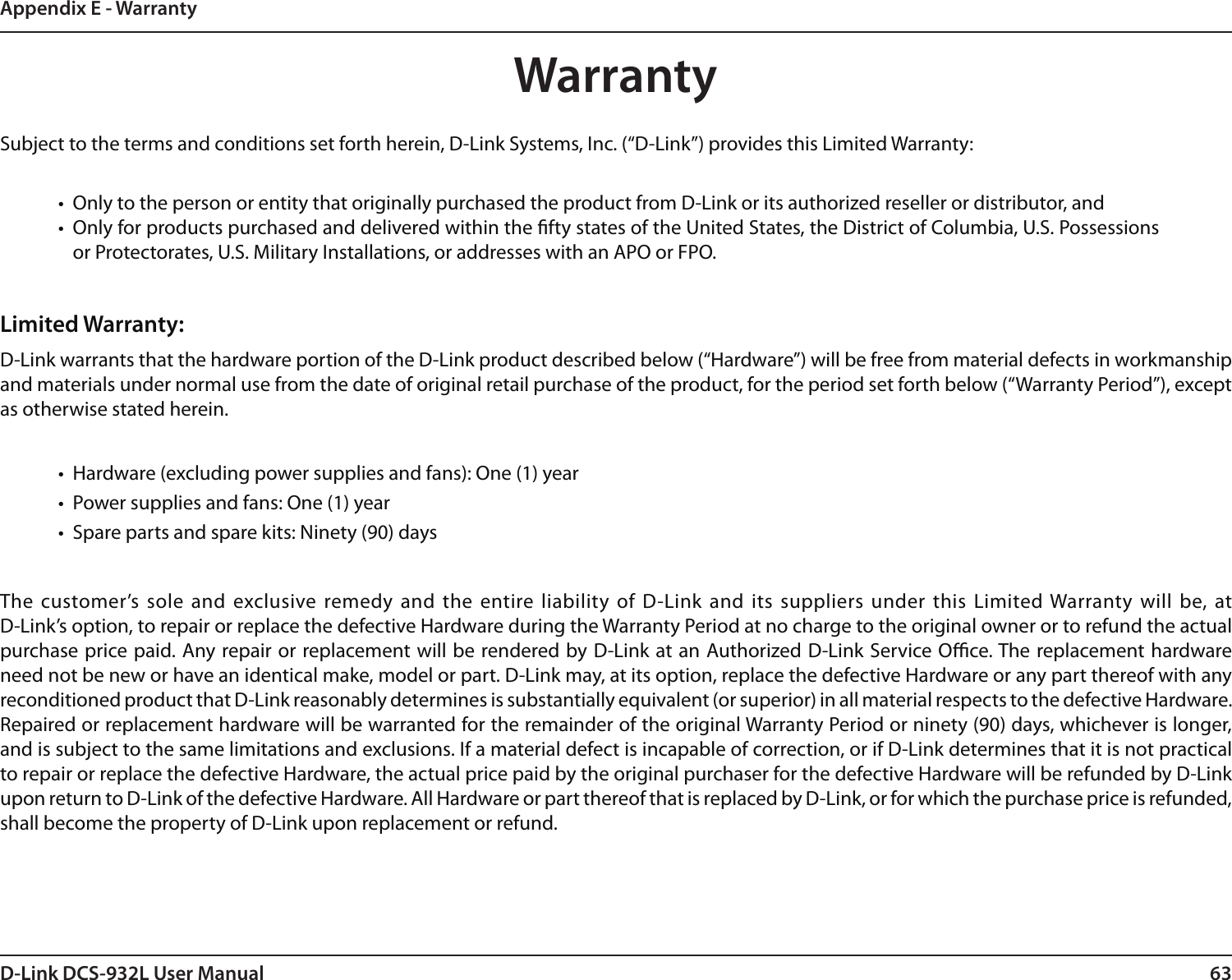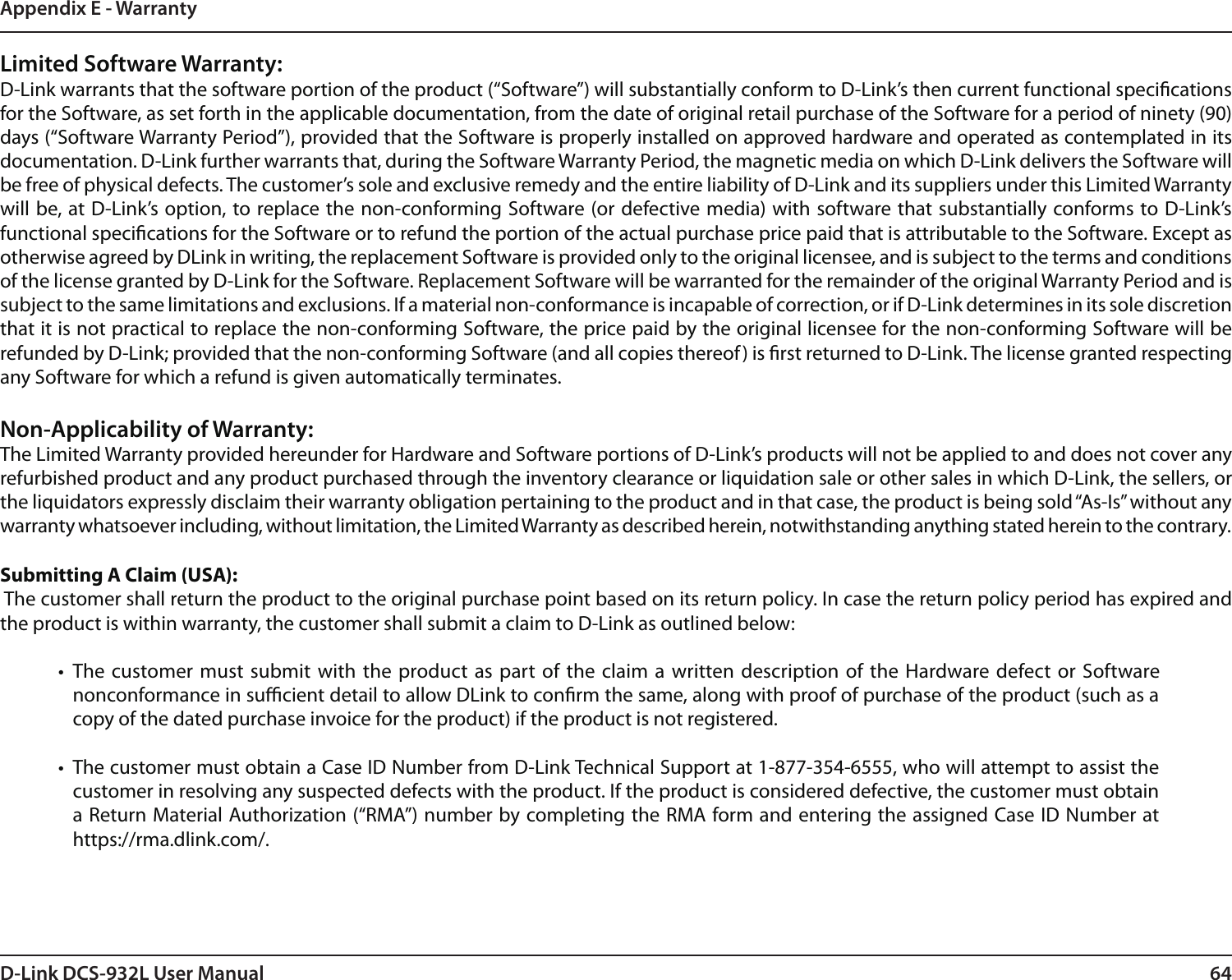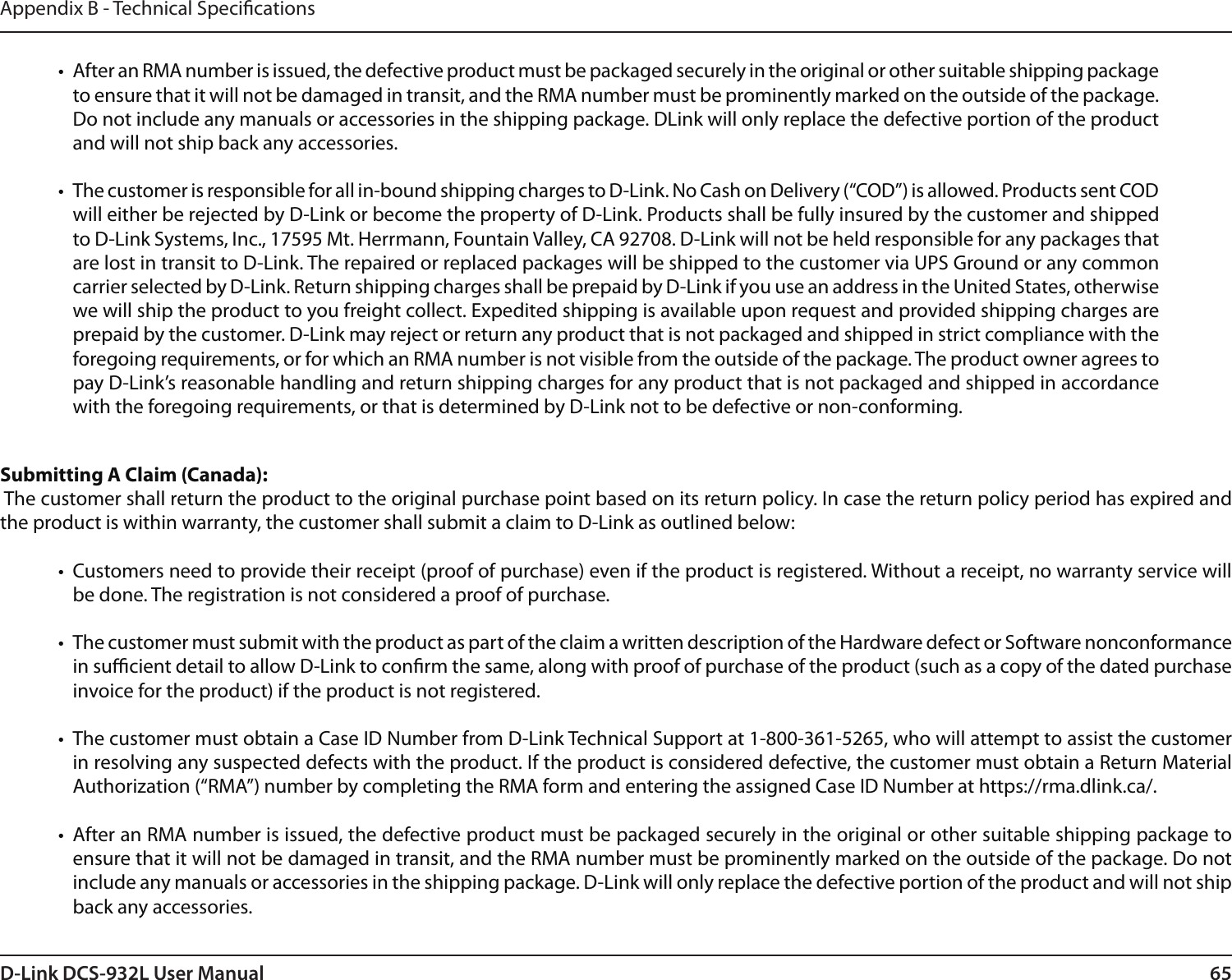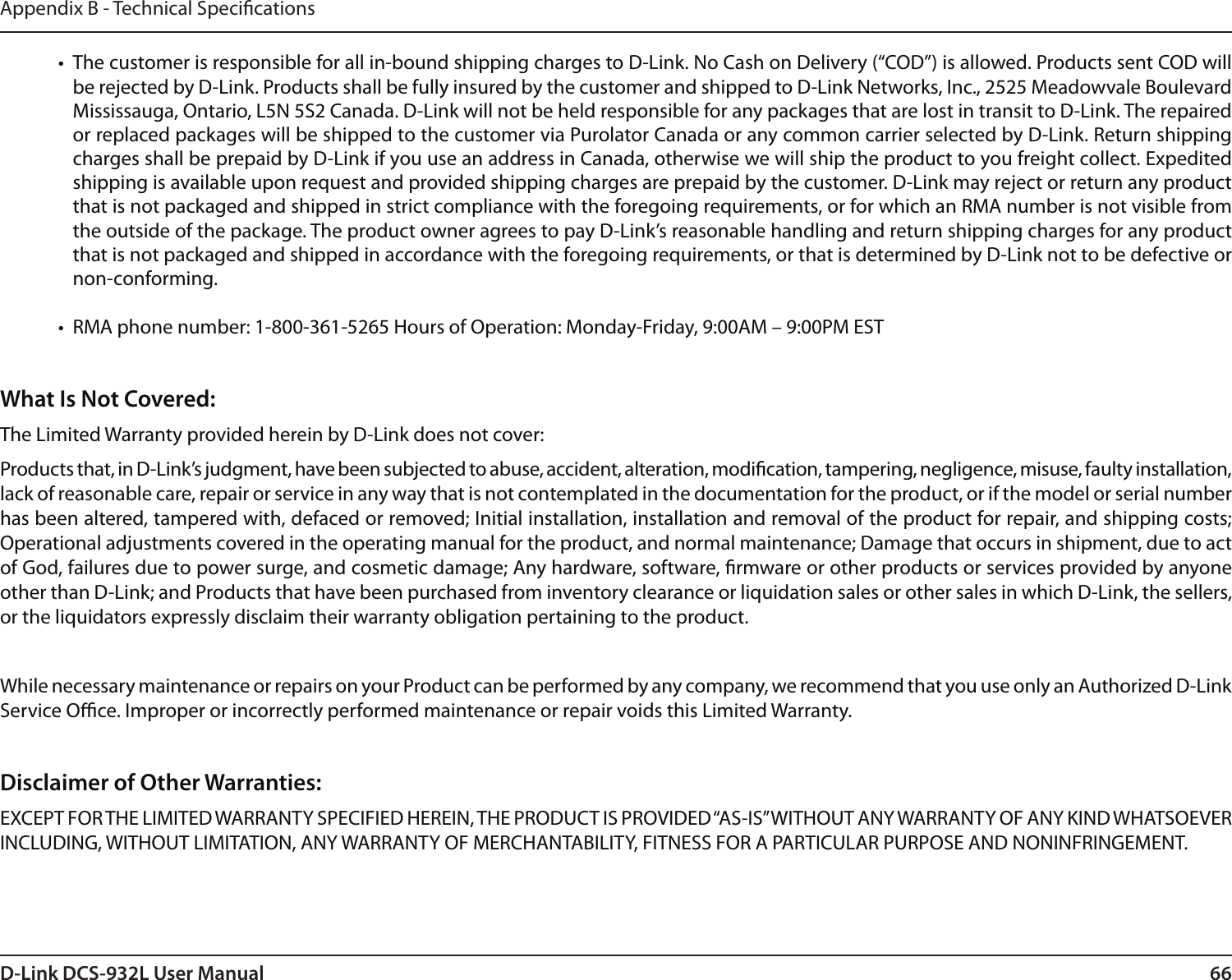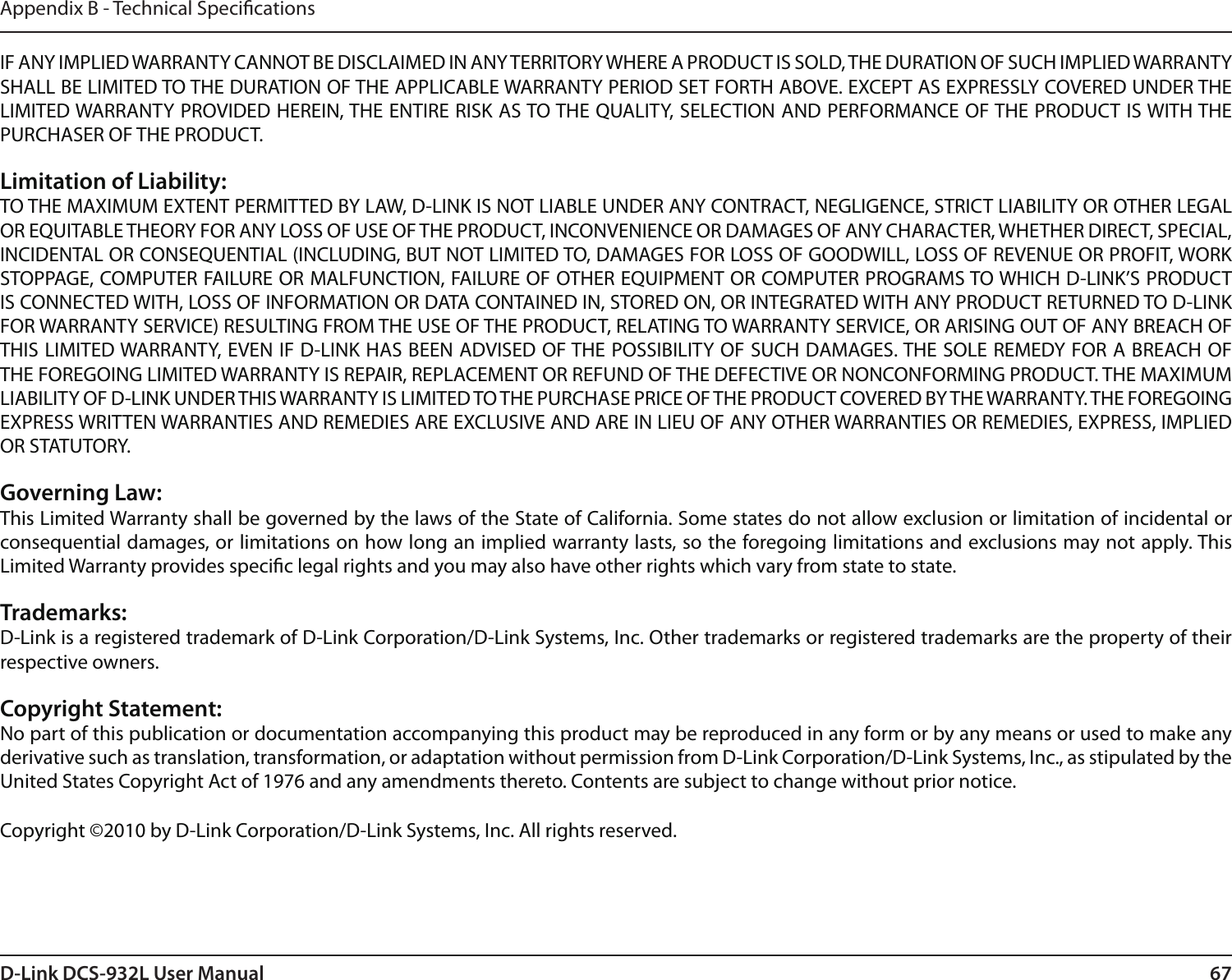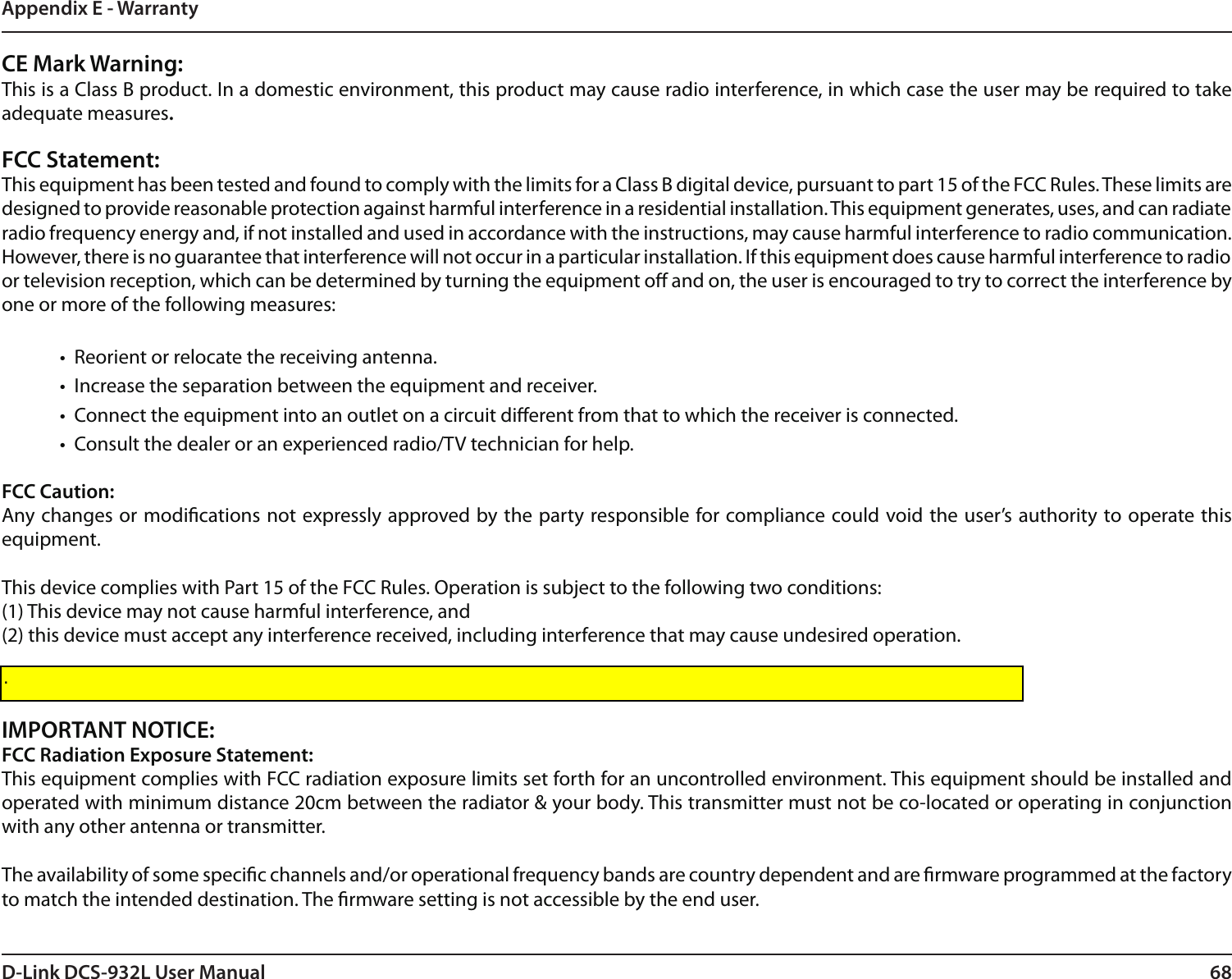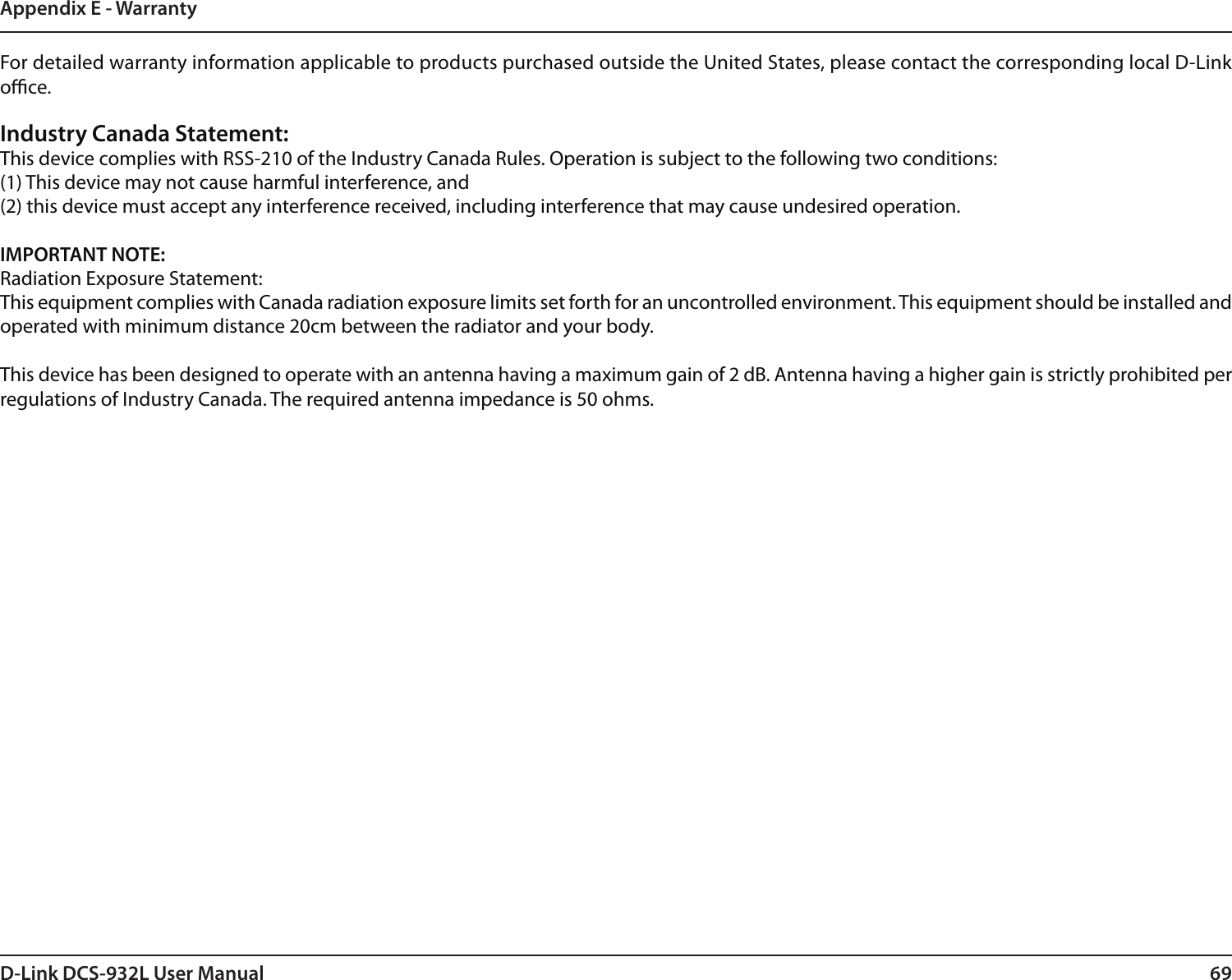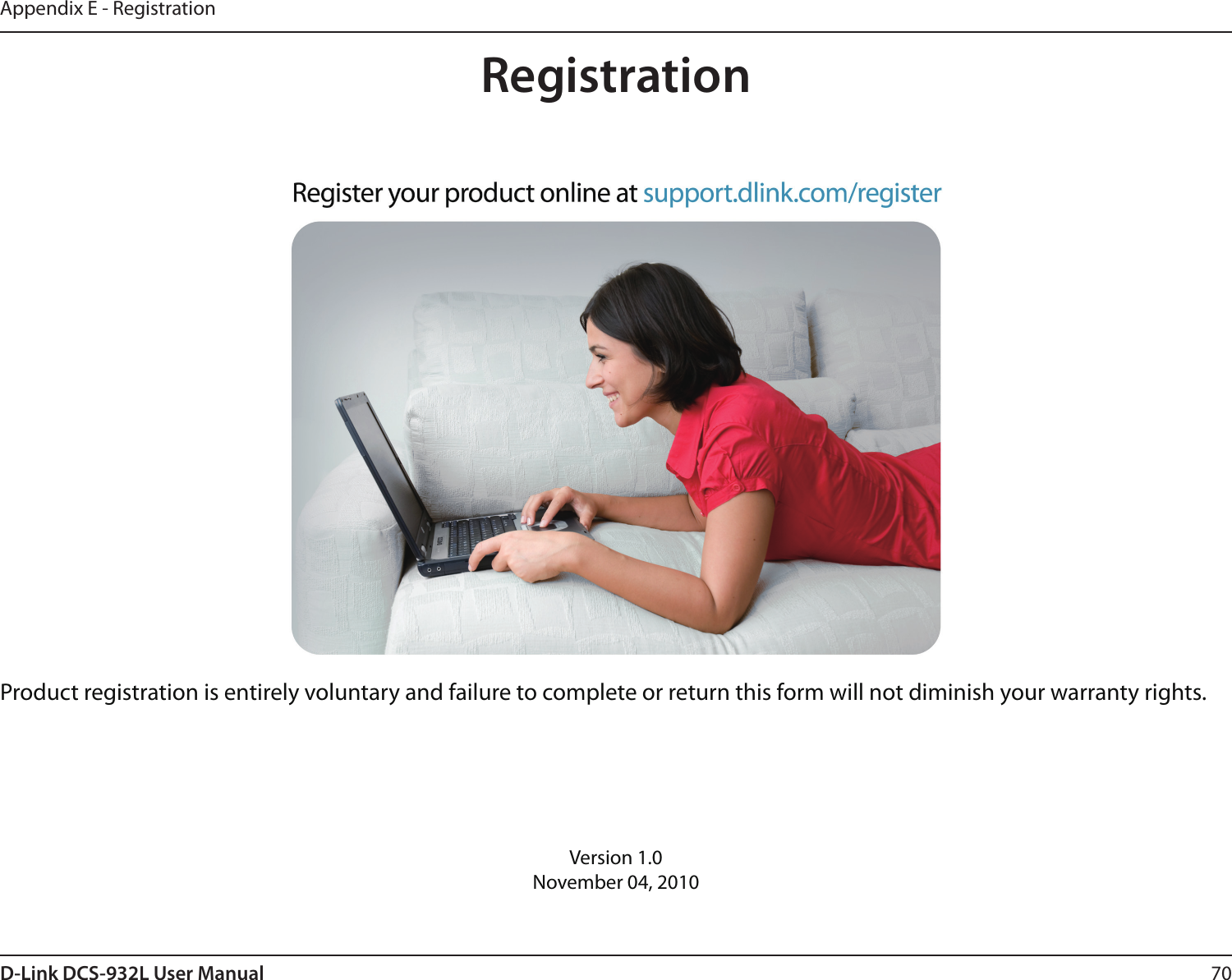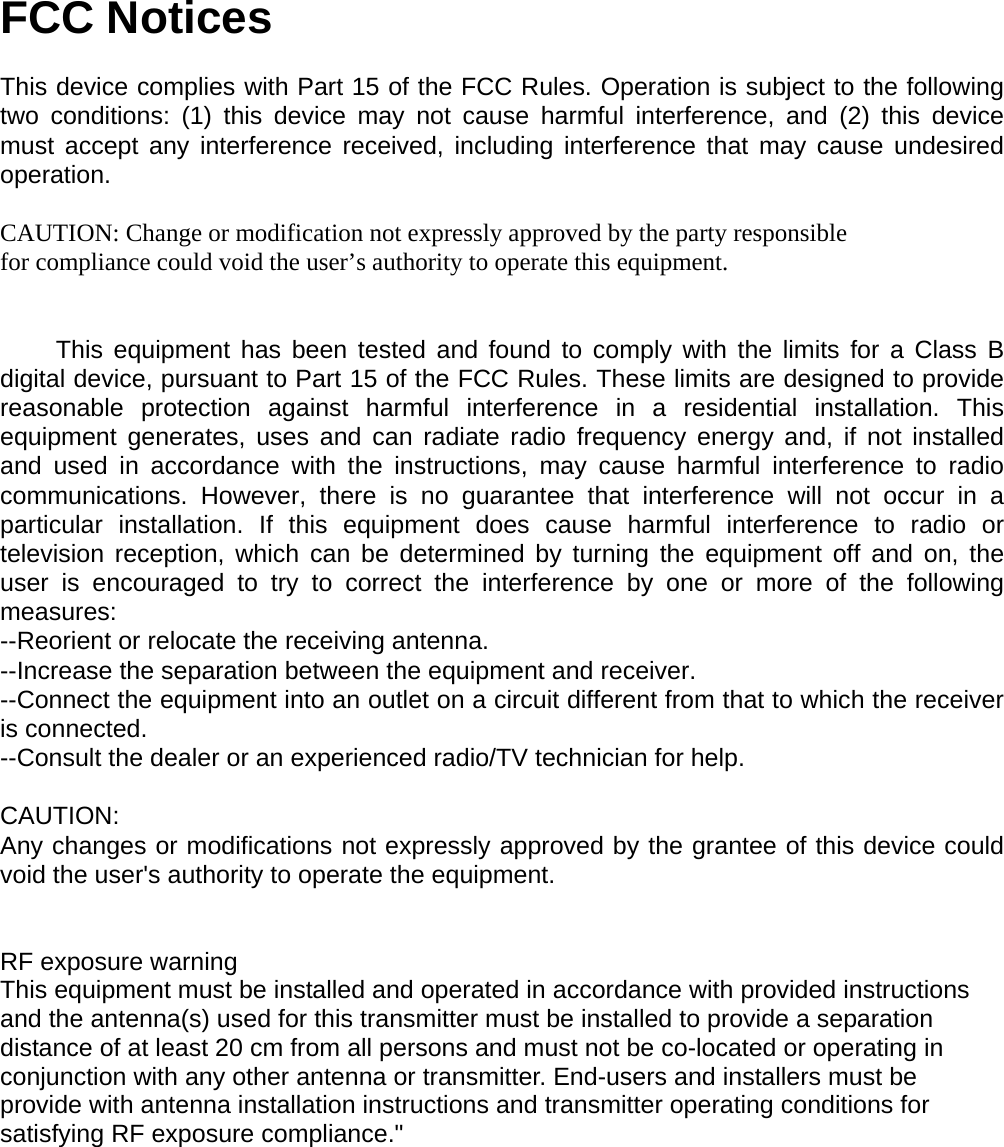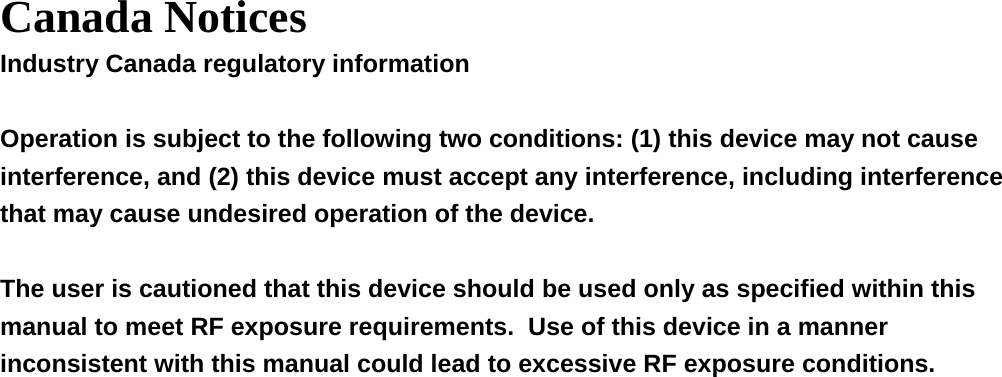D Link CS932LA1 Wireless N Day/Night Home Network Camera User Manual DCS 932L UserMan 2 2011 01 27
D Link Corporation Wireless N Day/Night Home Network Camera DCS 932L UserMan 2 2011 01 27
D Link >
Contents
(DCS-932L)UserMan-2-2011-01-27
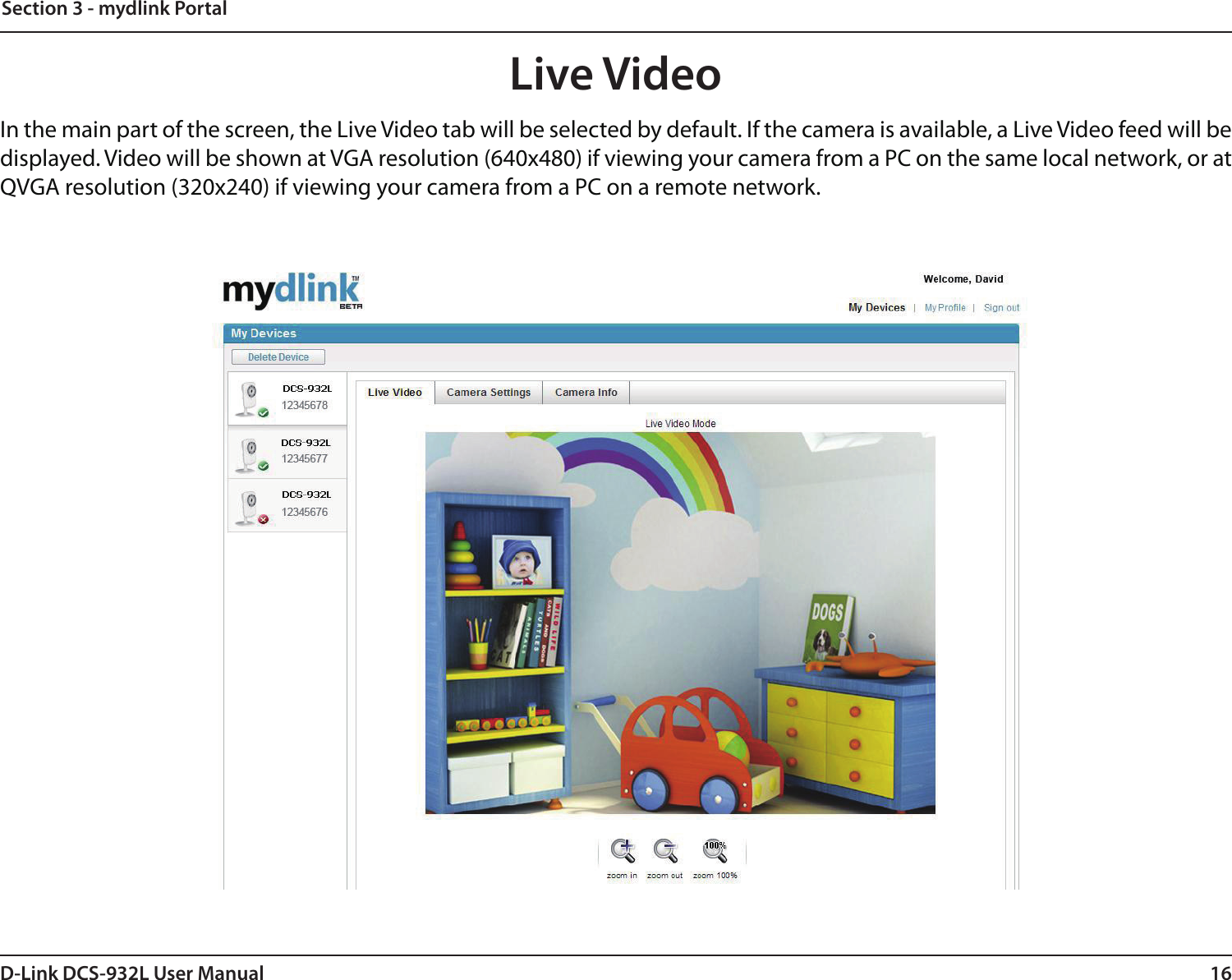
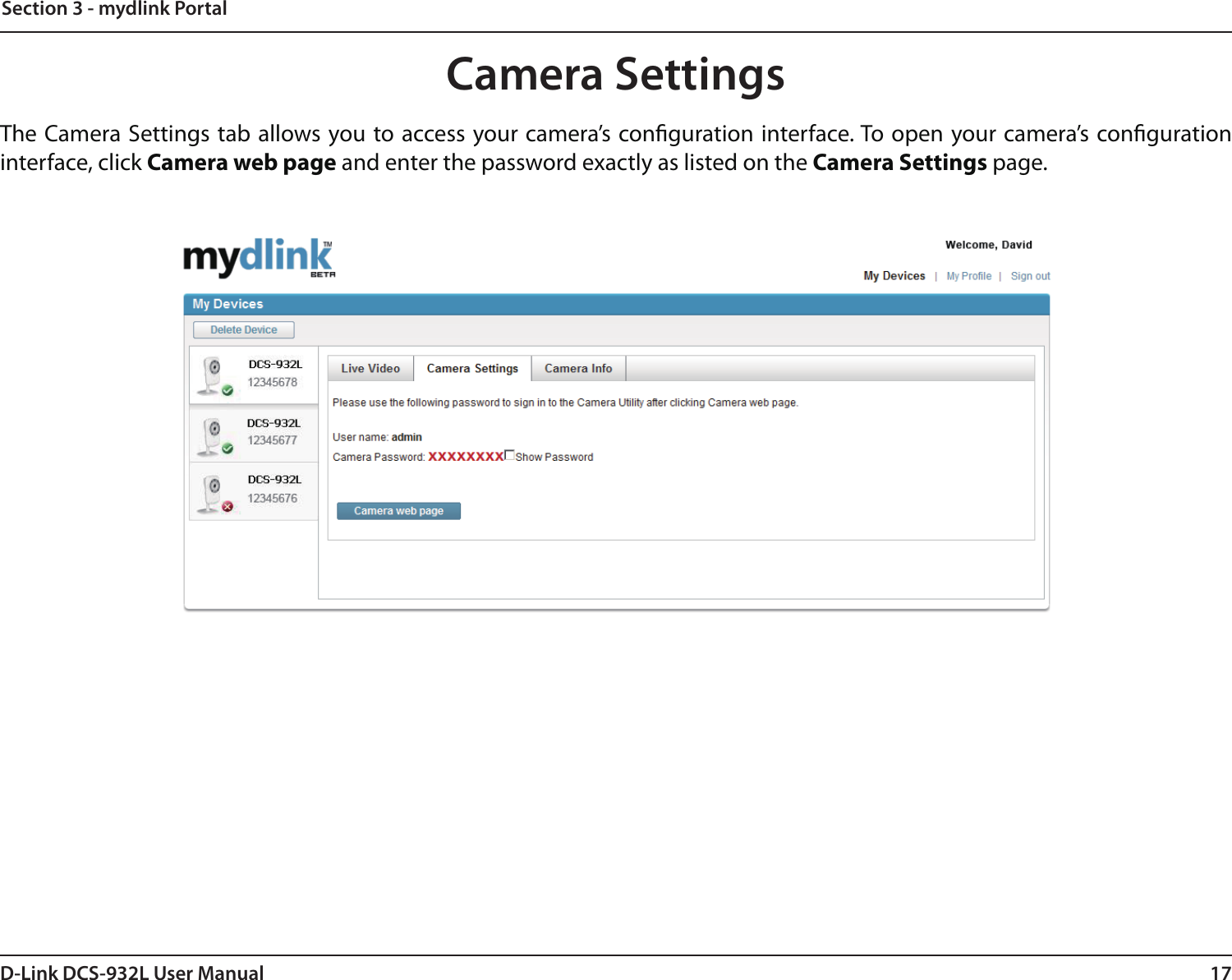
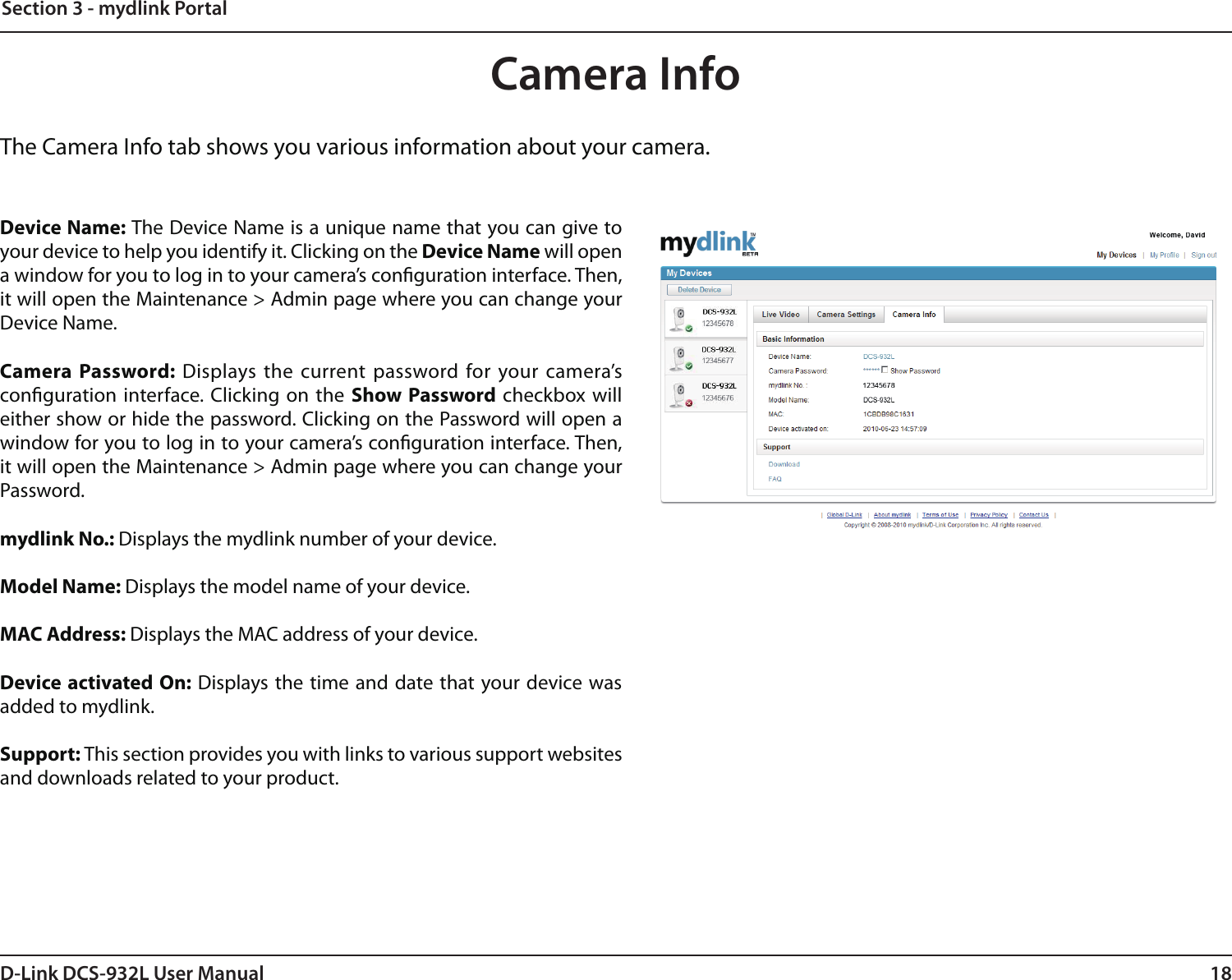
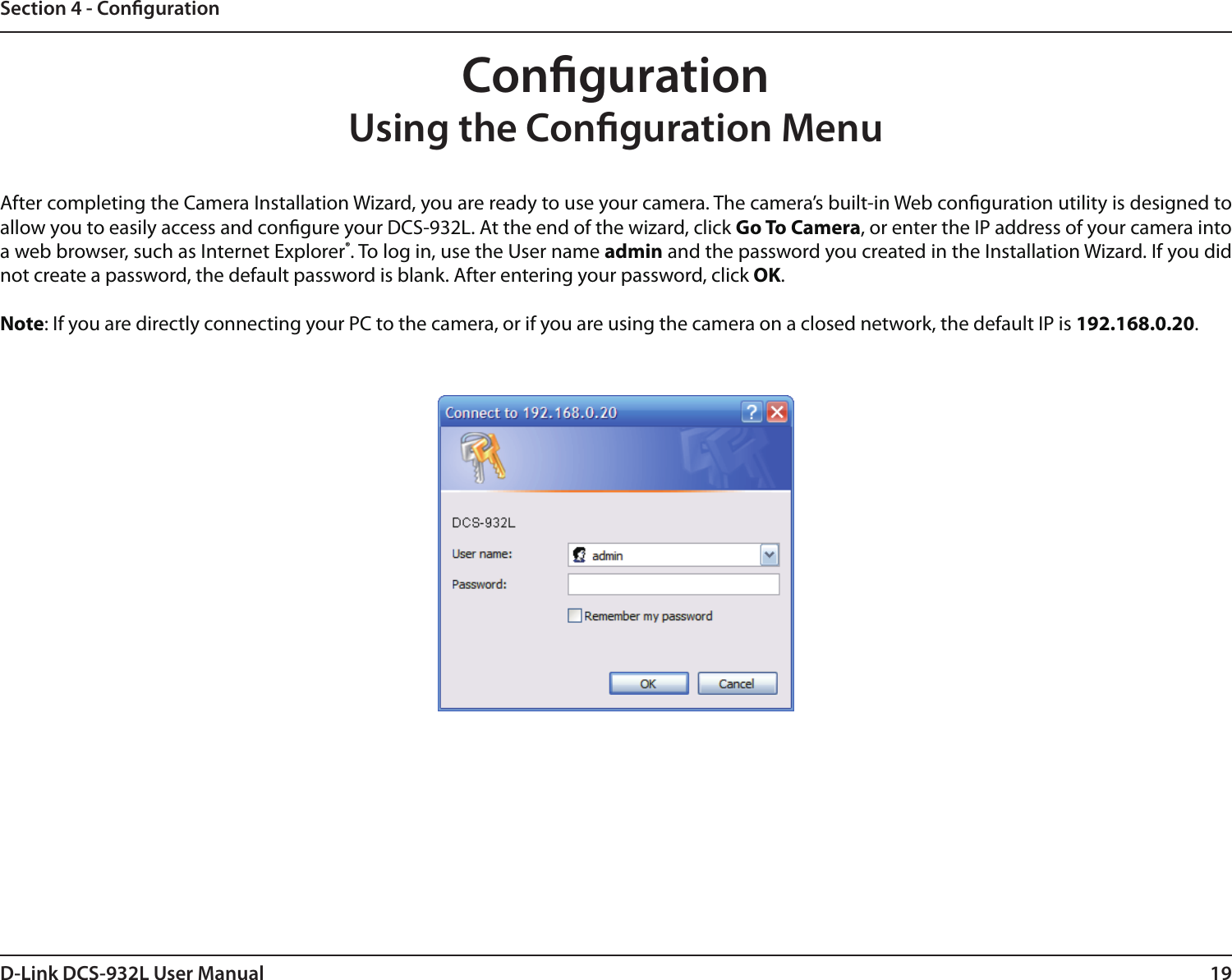
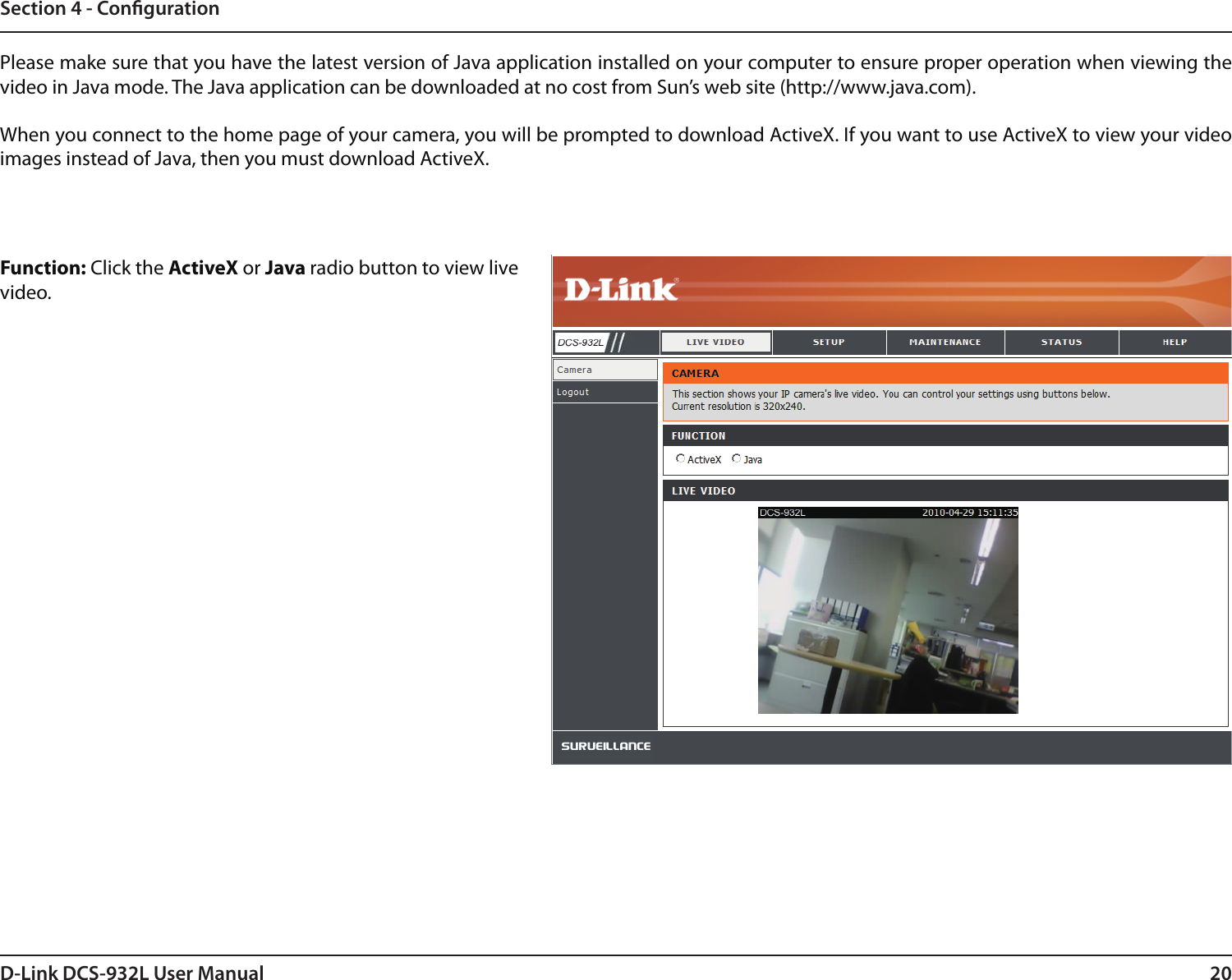
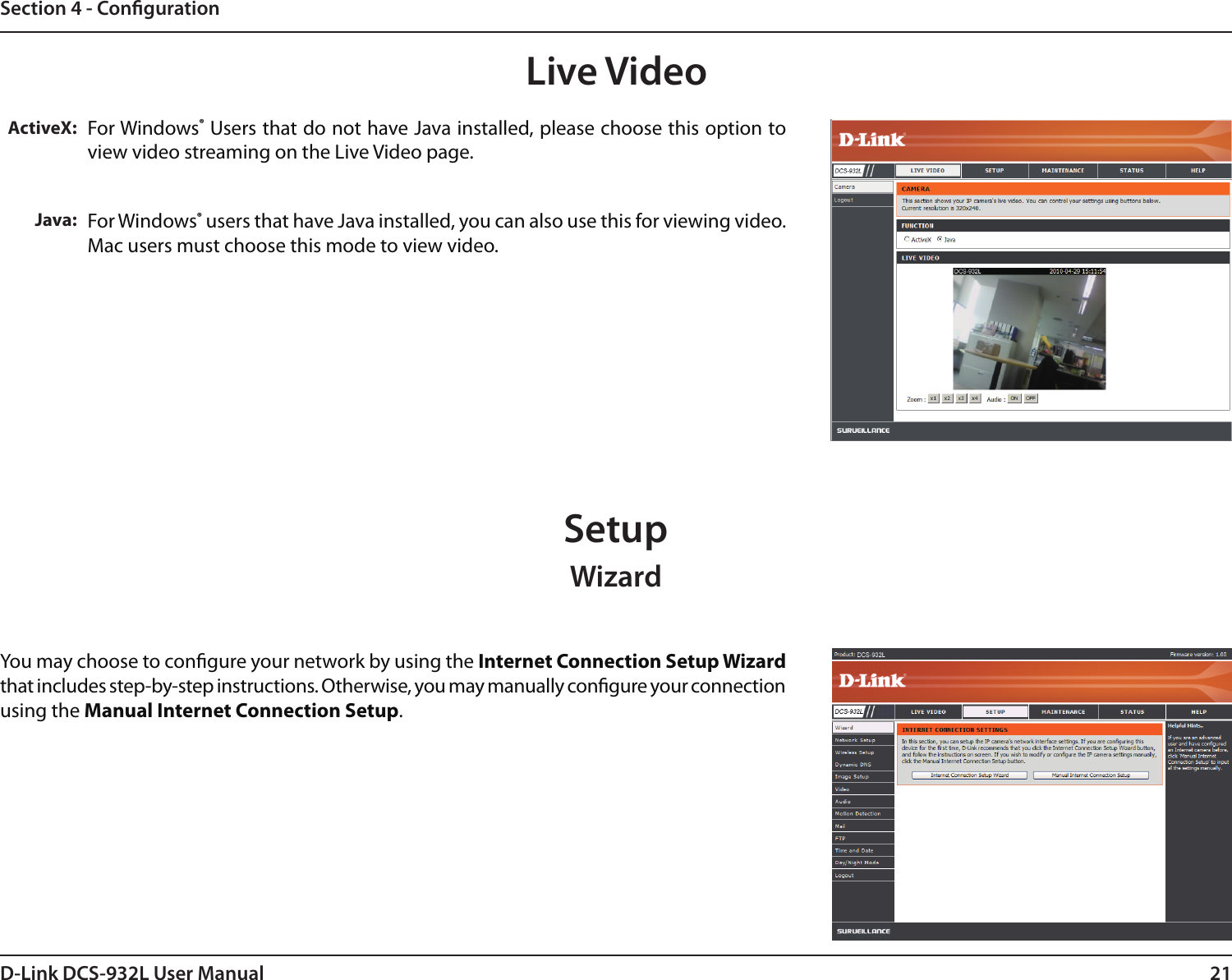
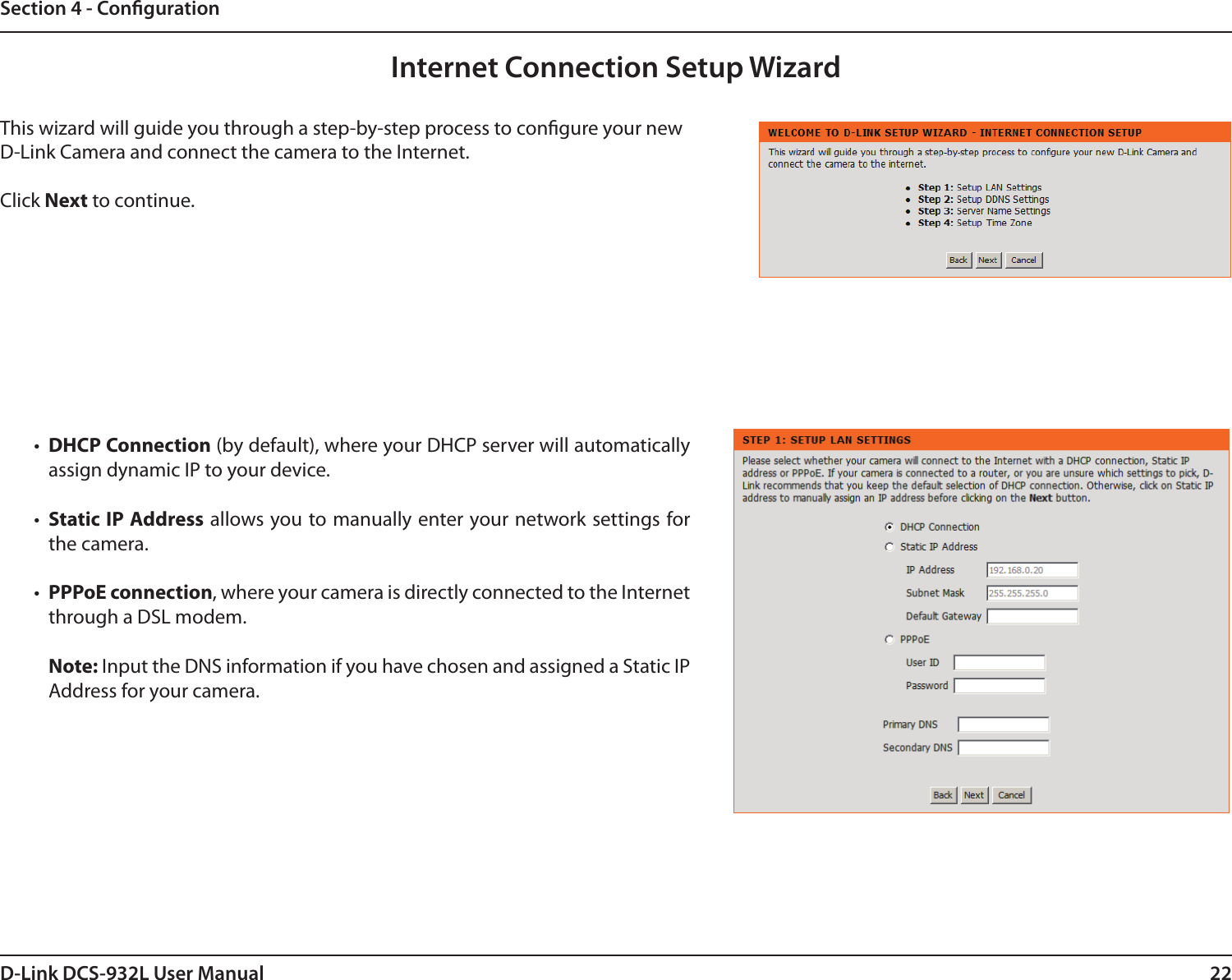
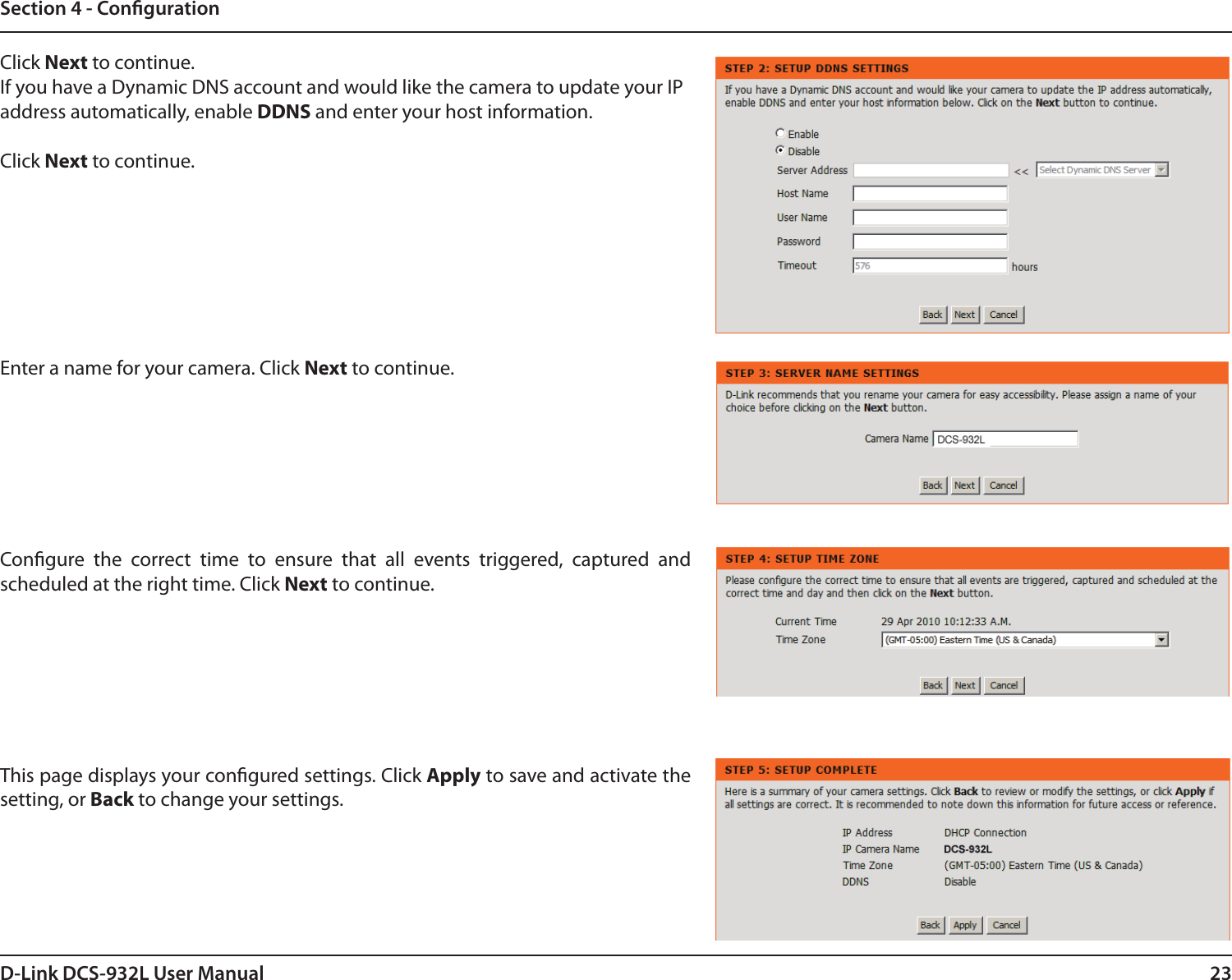
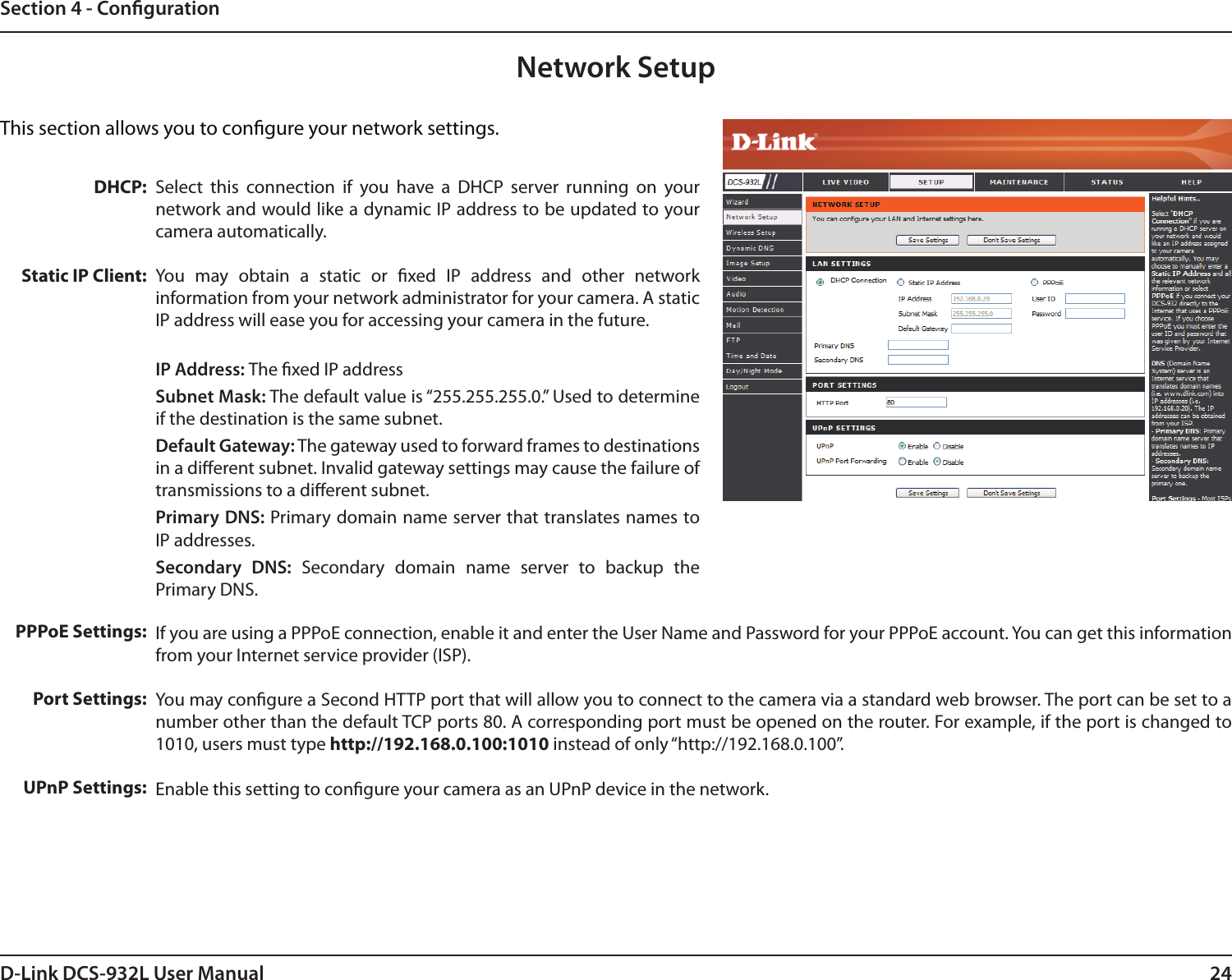
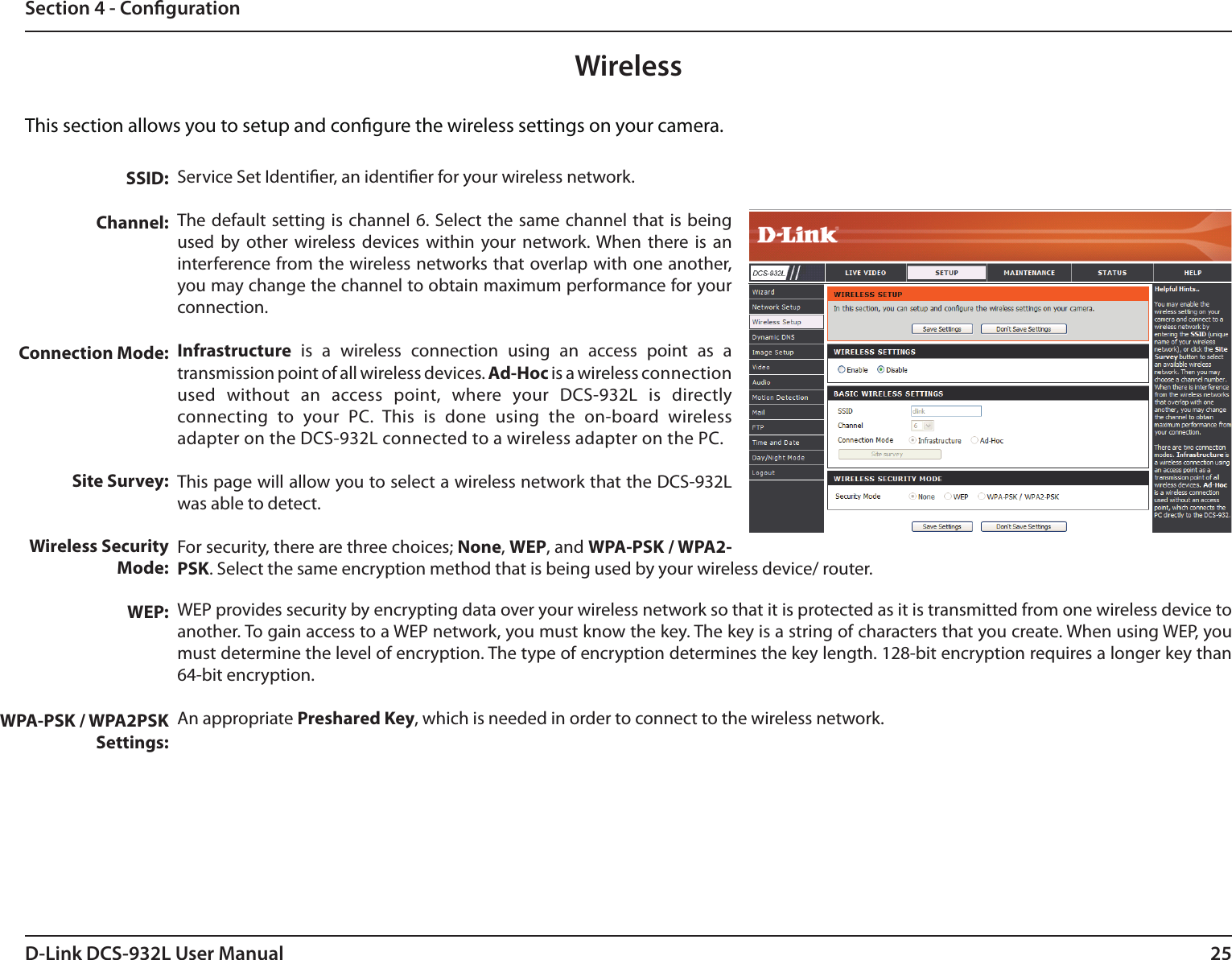
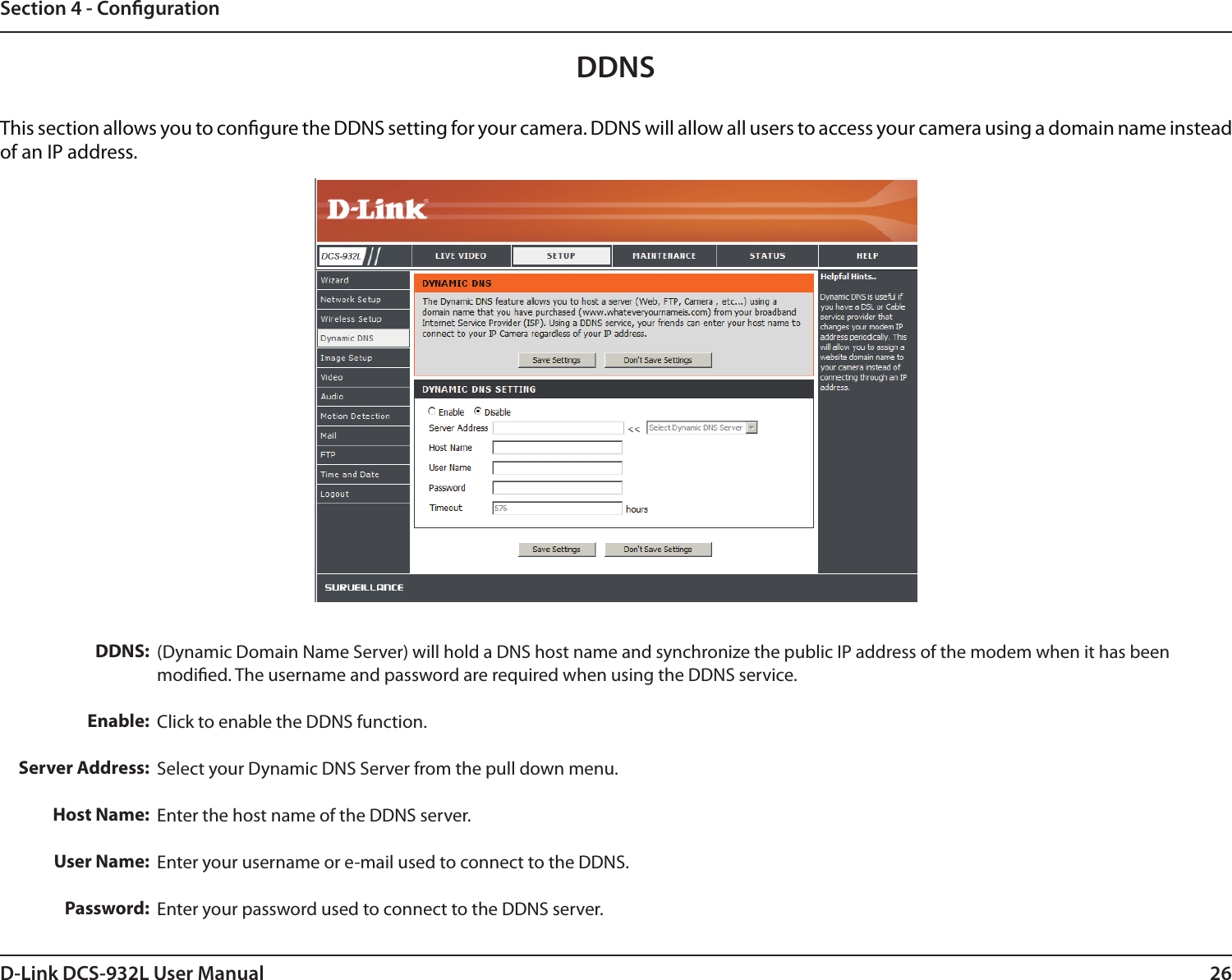
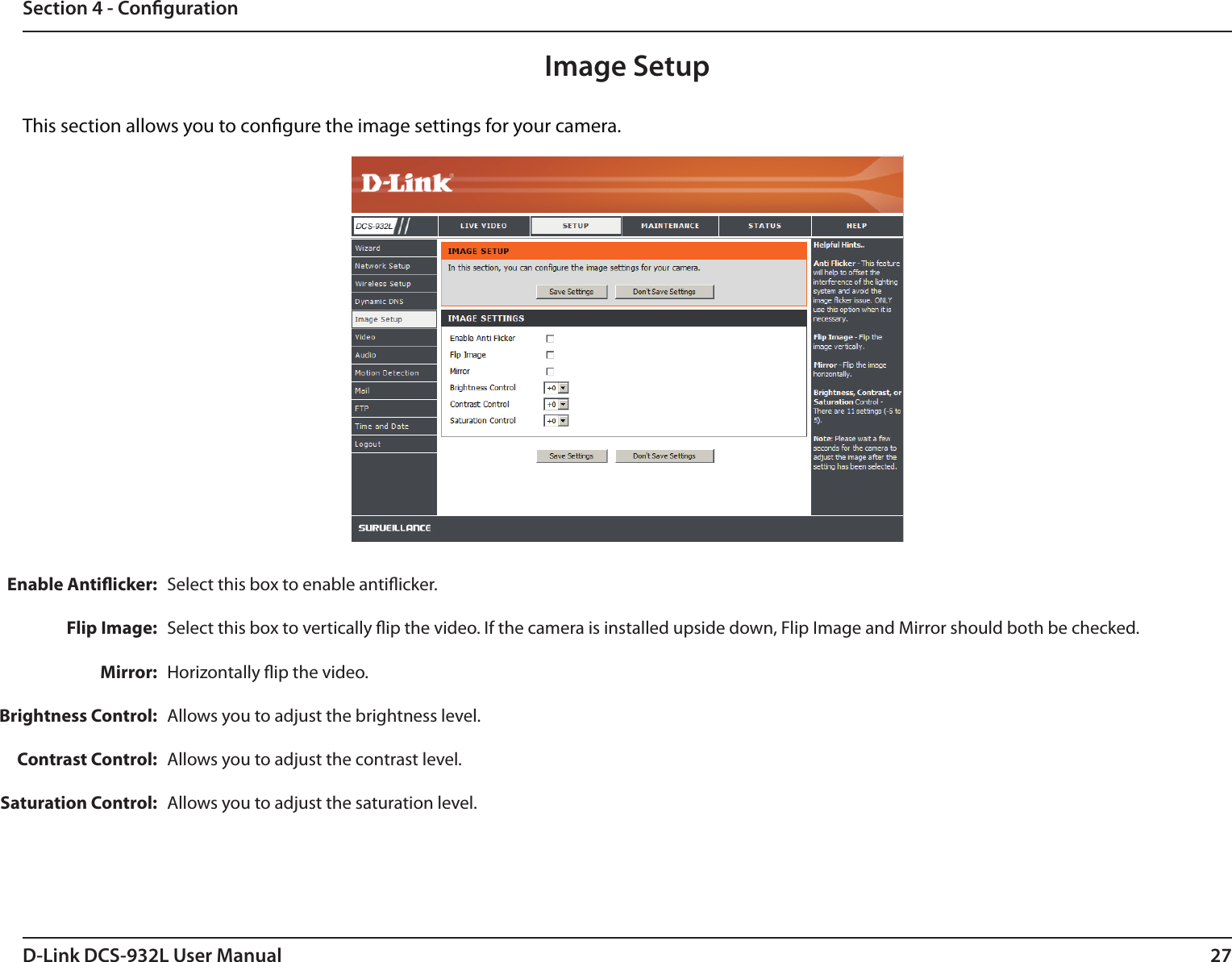
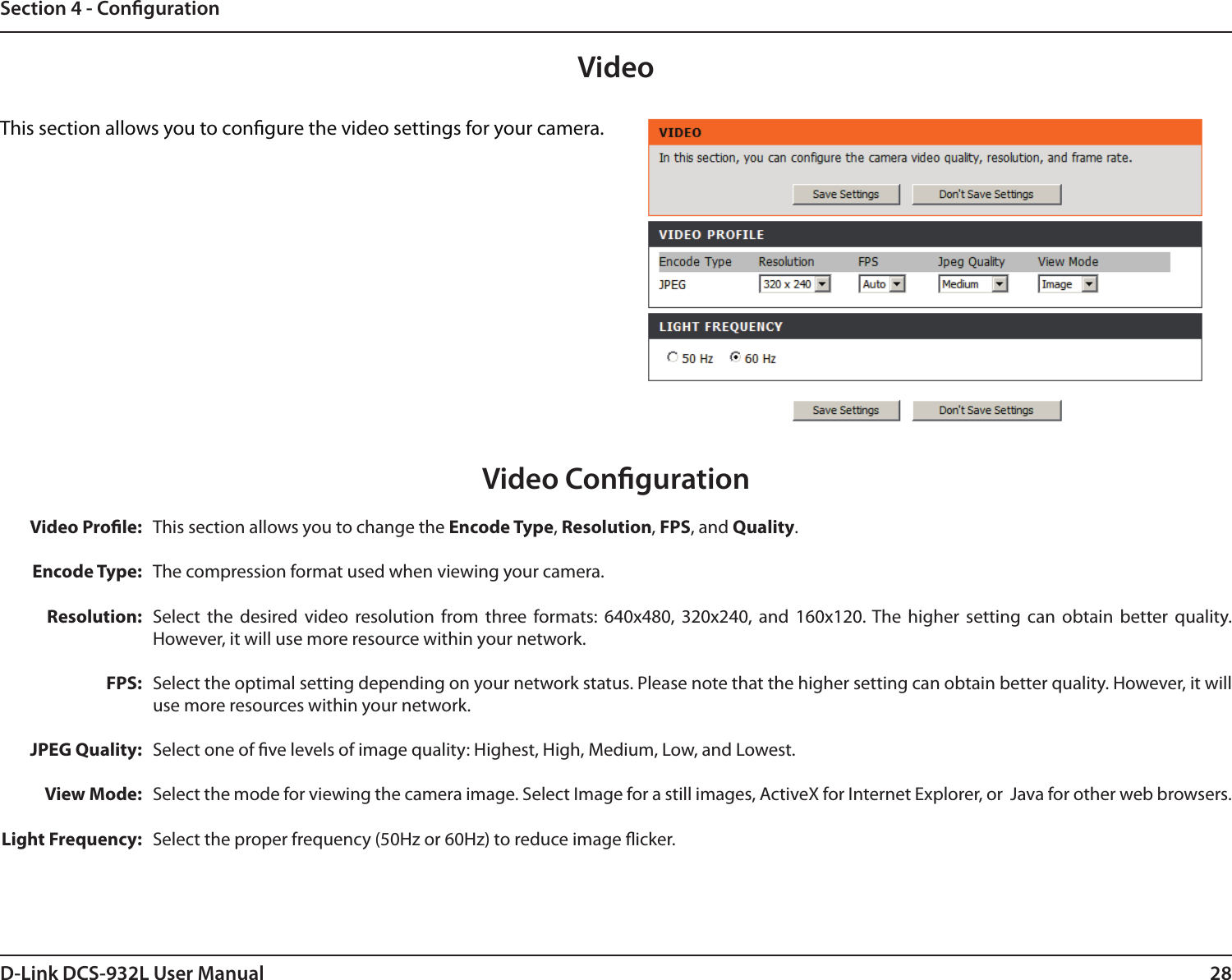
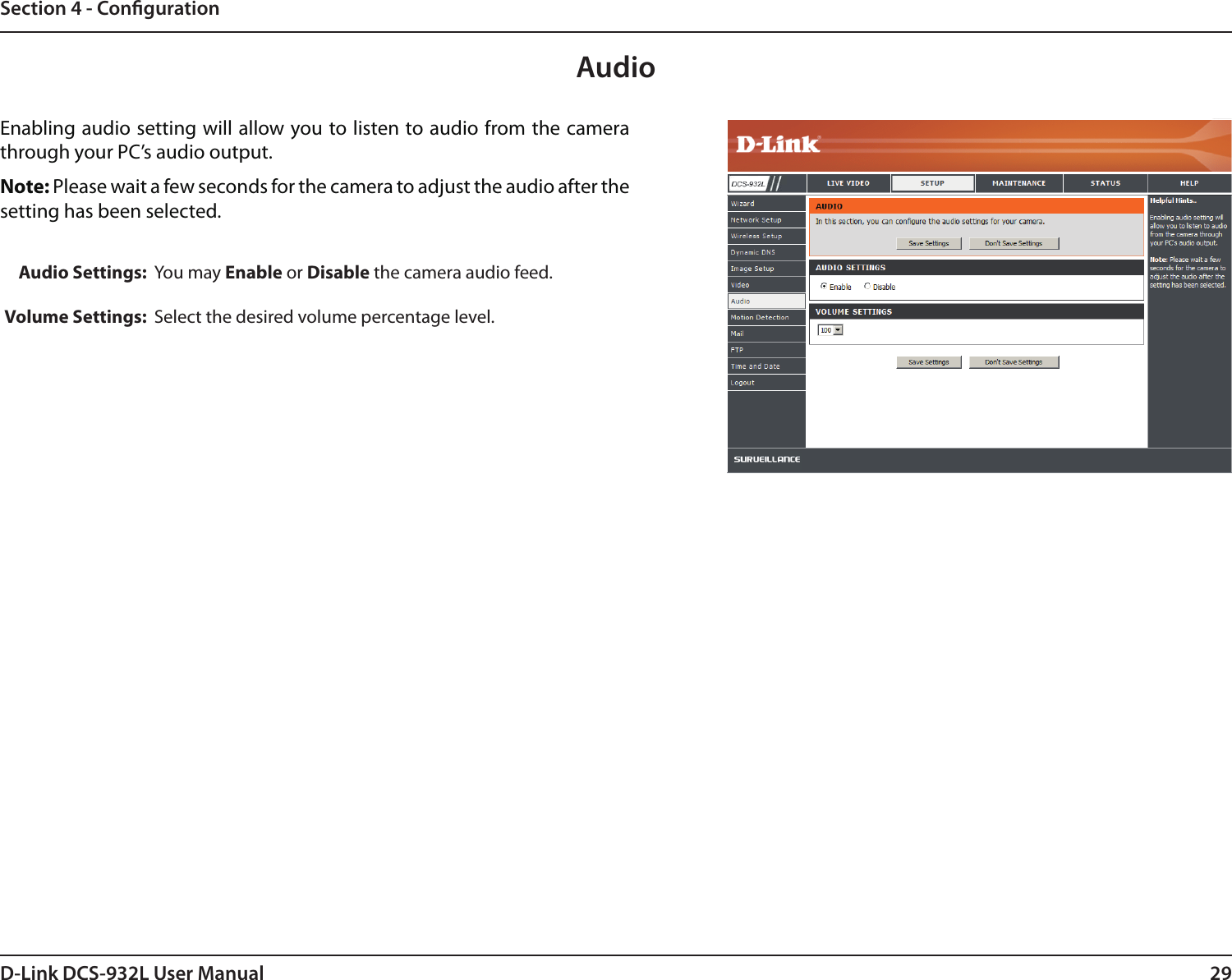
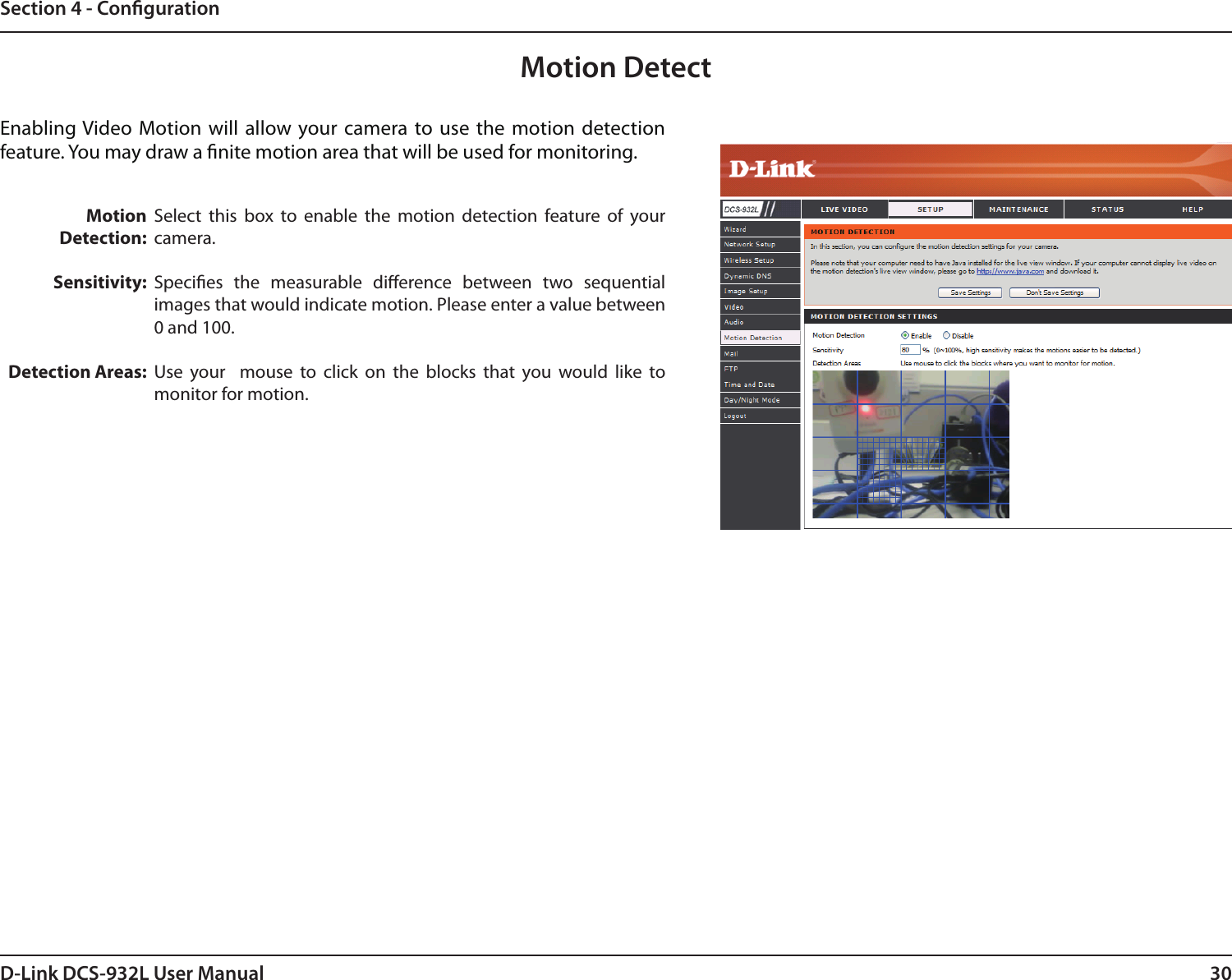
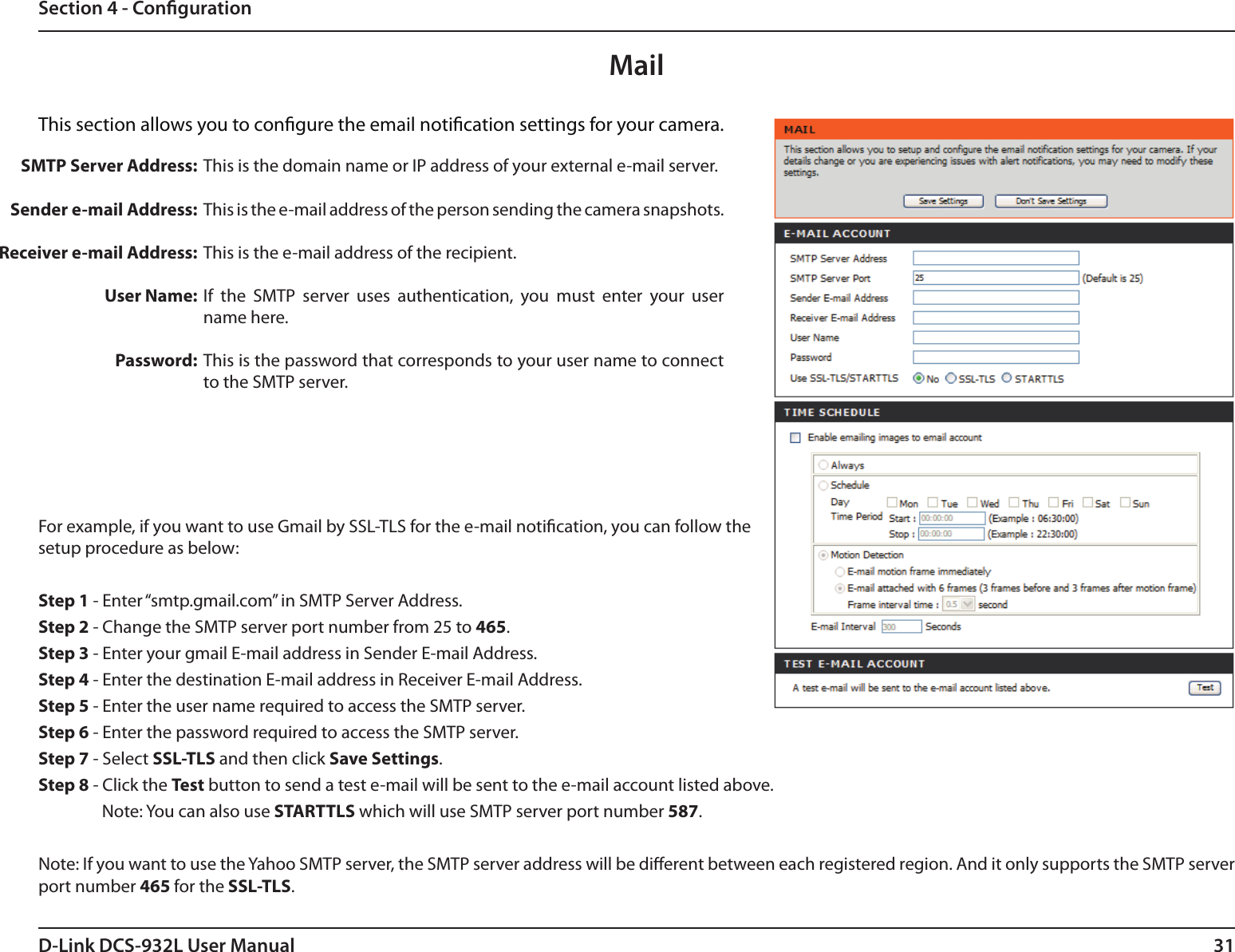
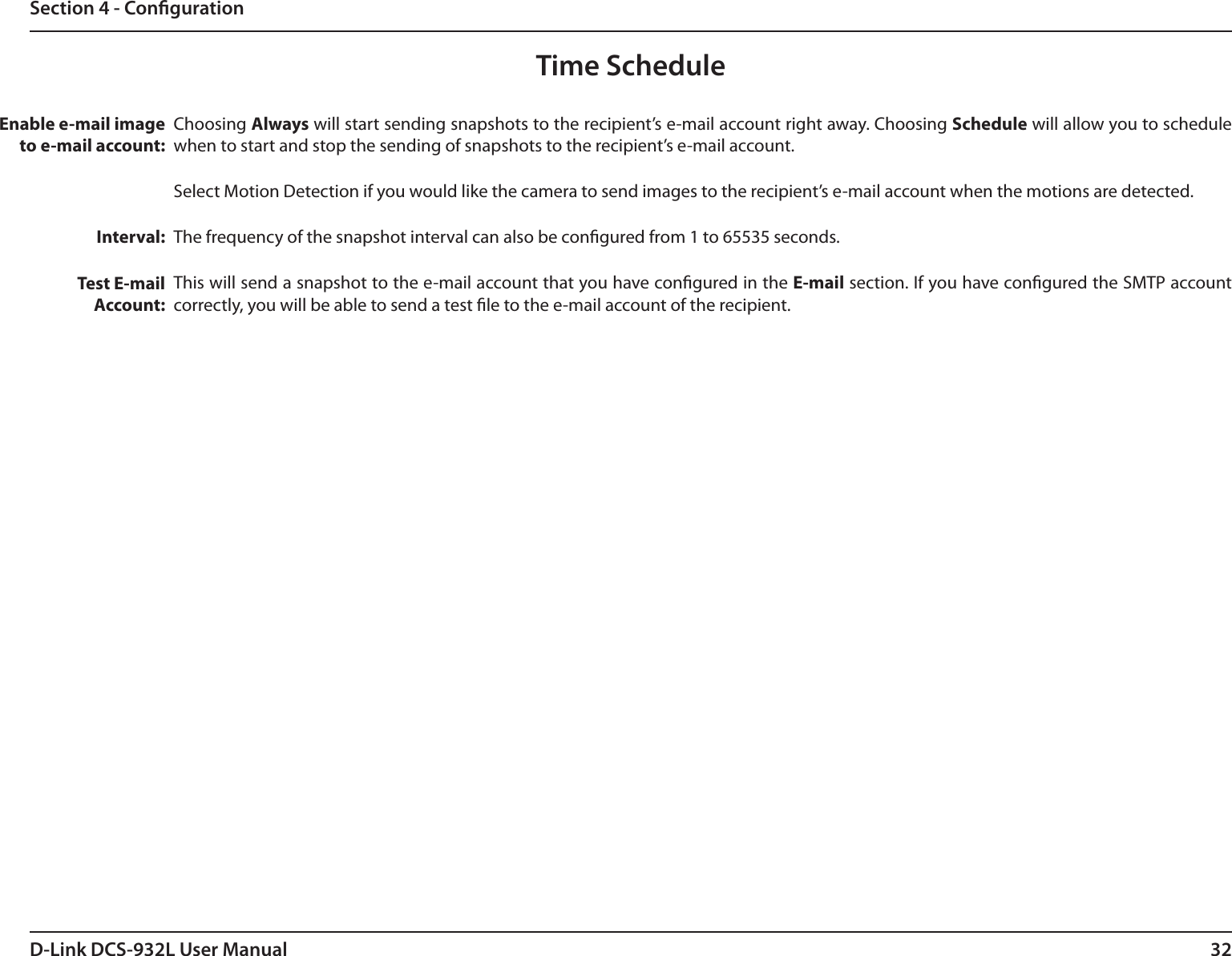
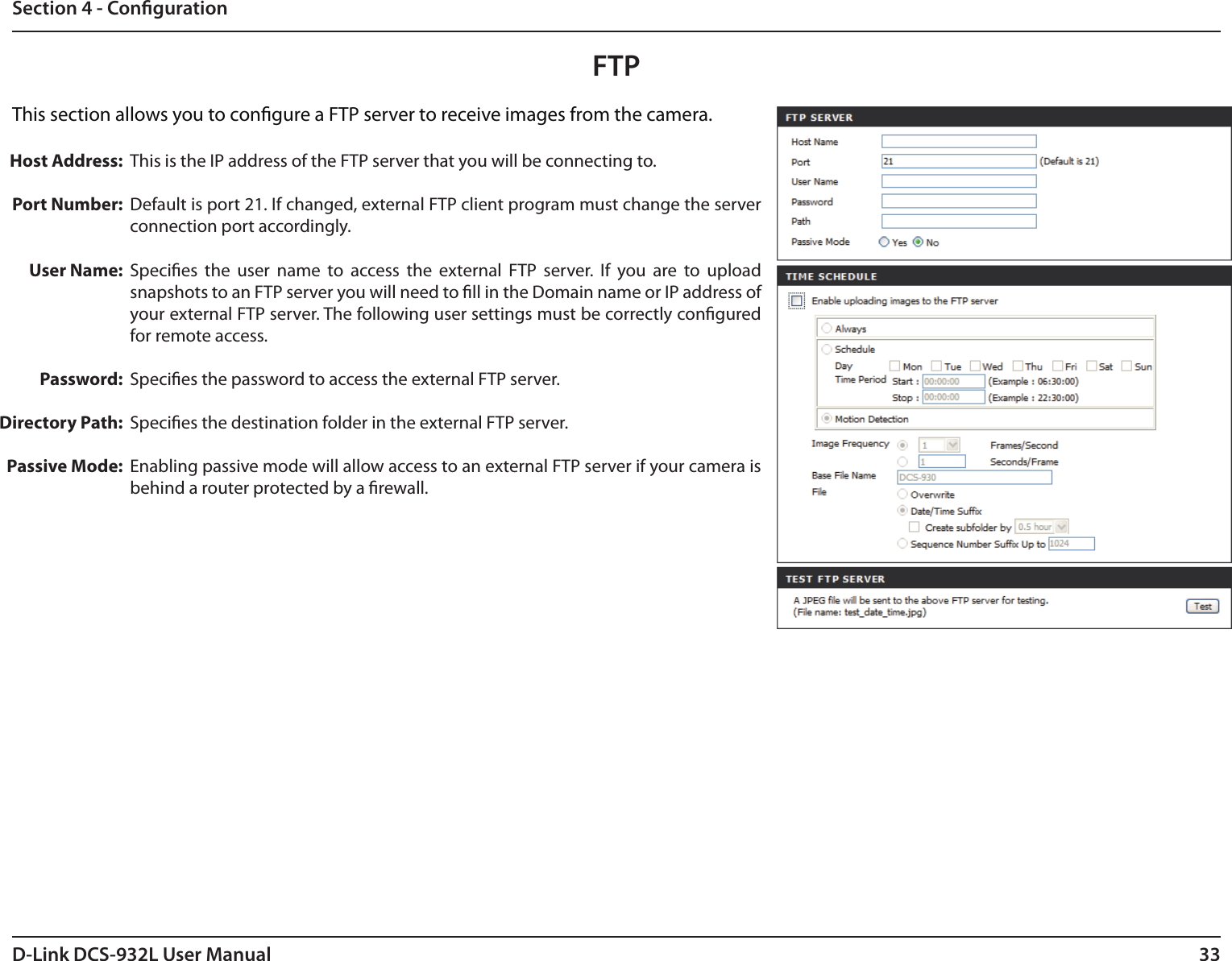
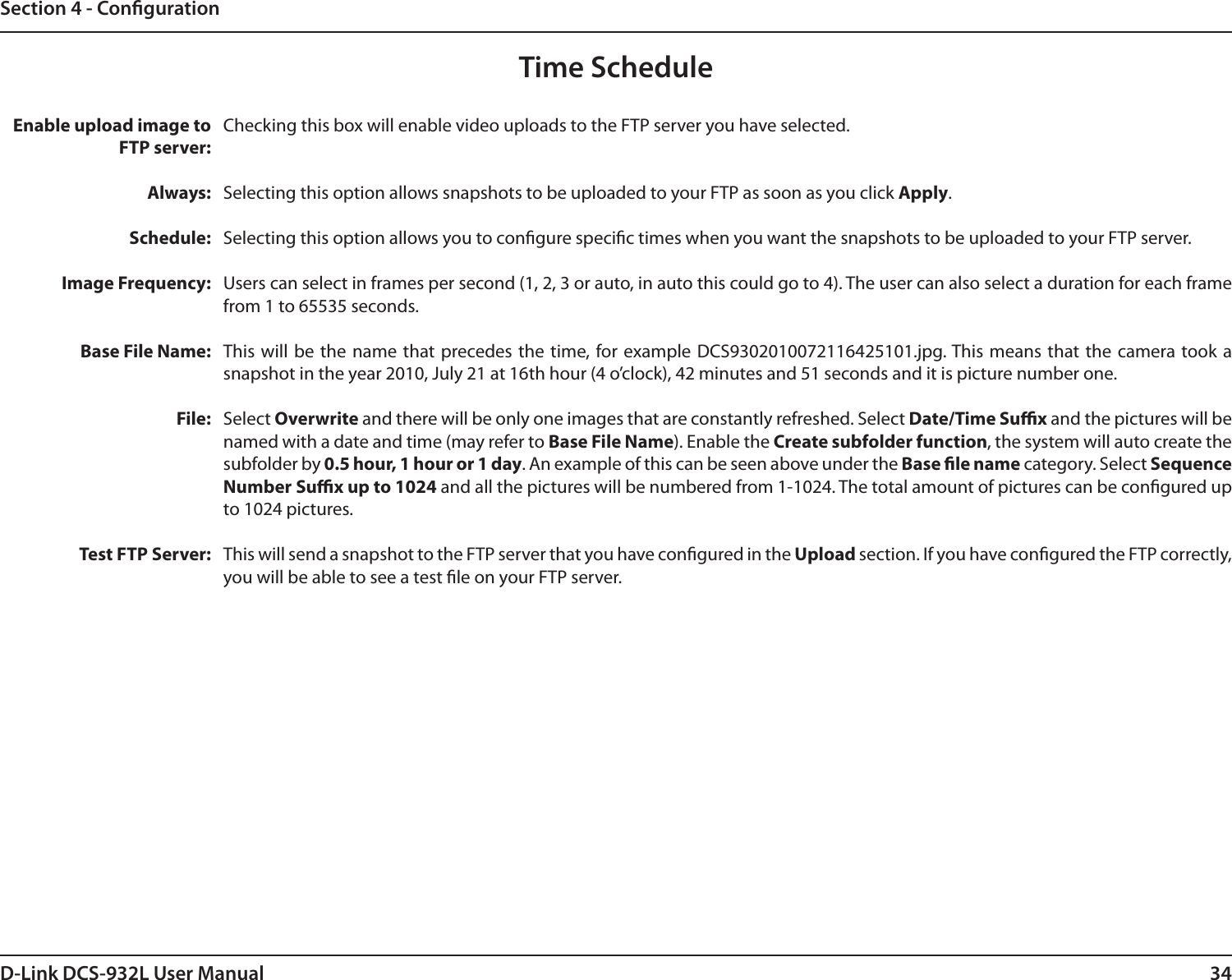
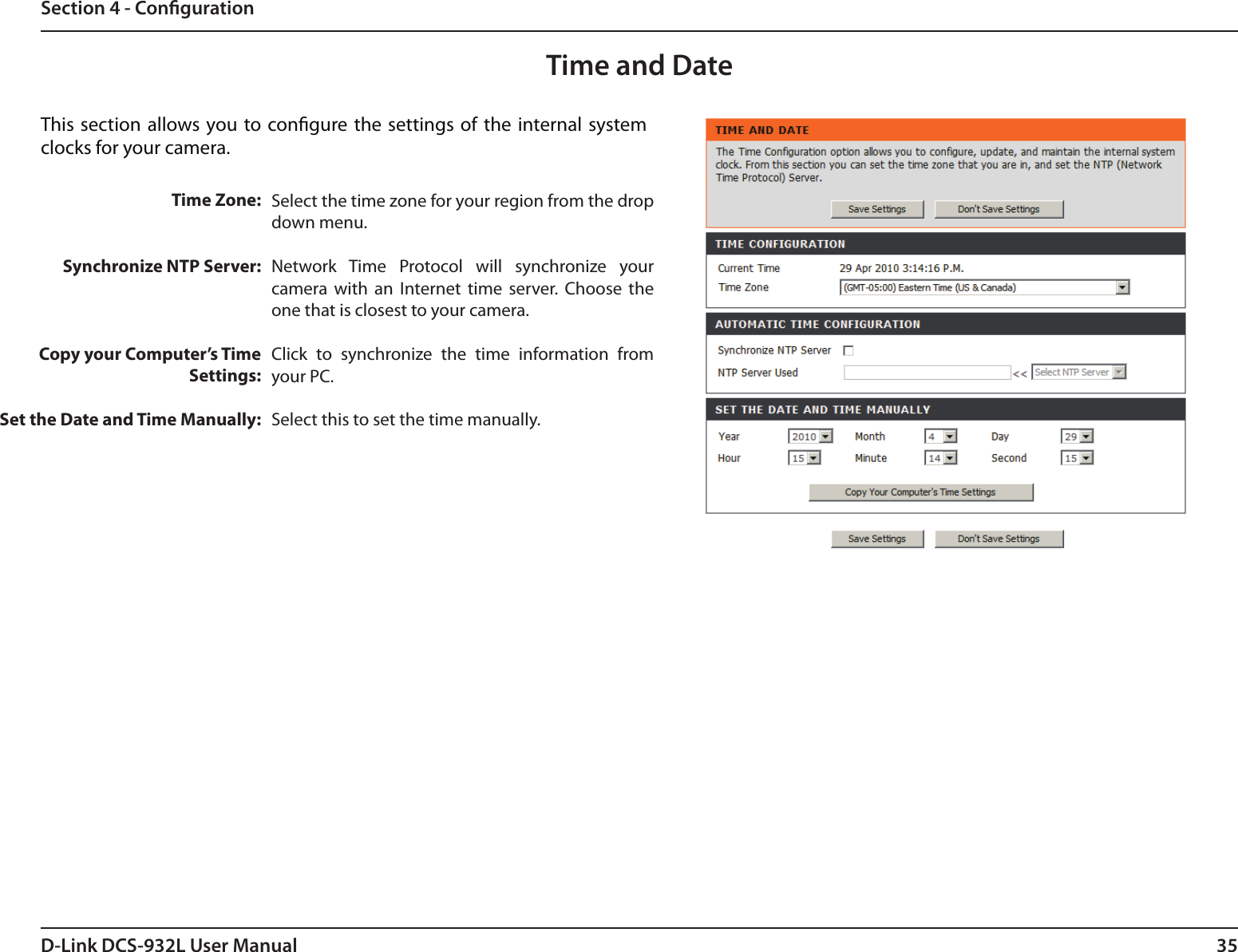
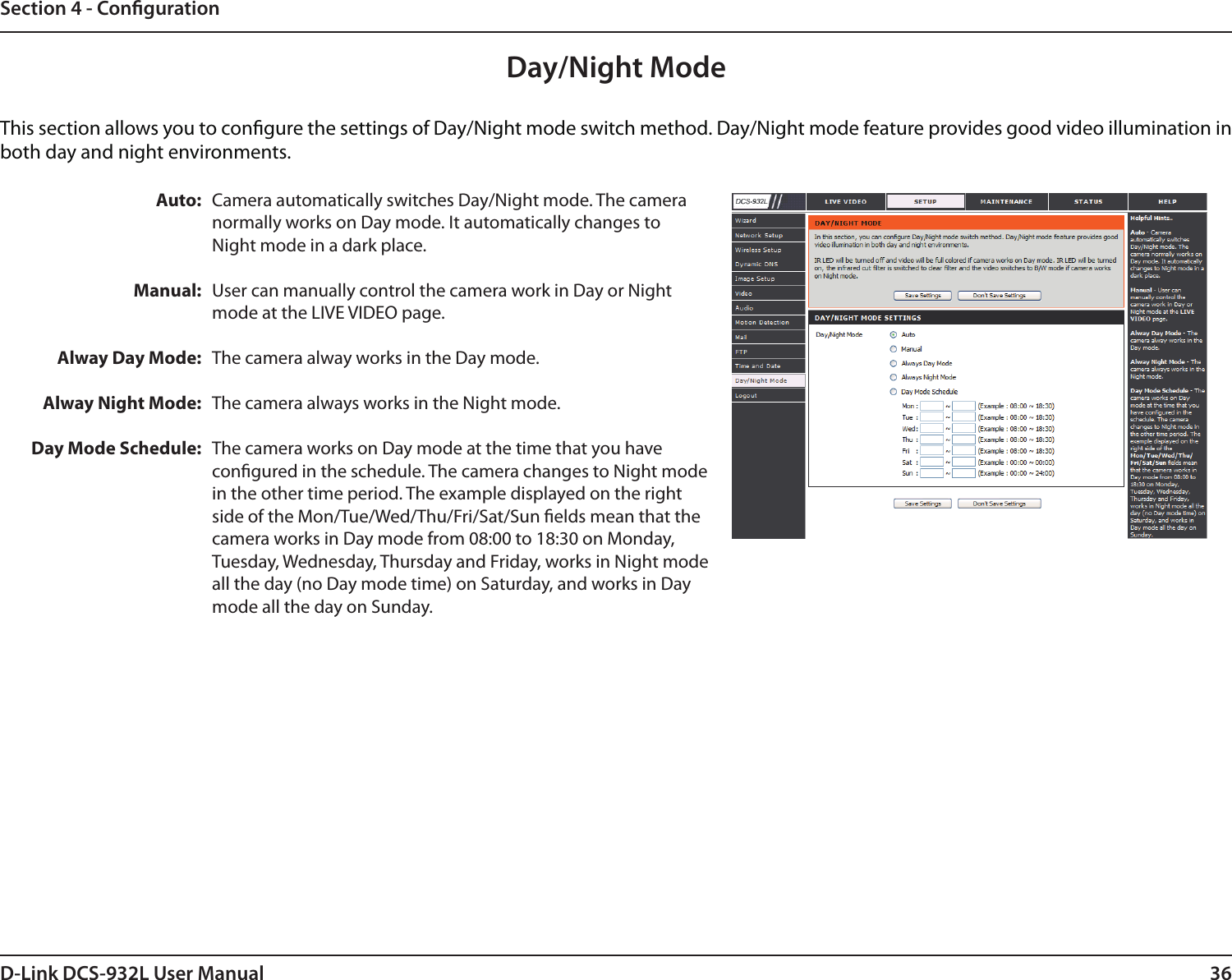
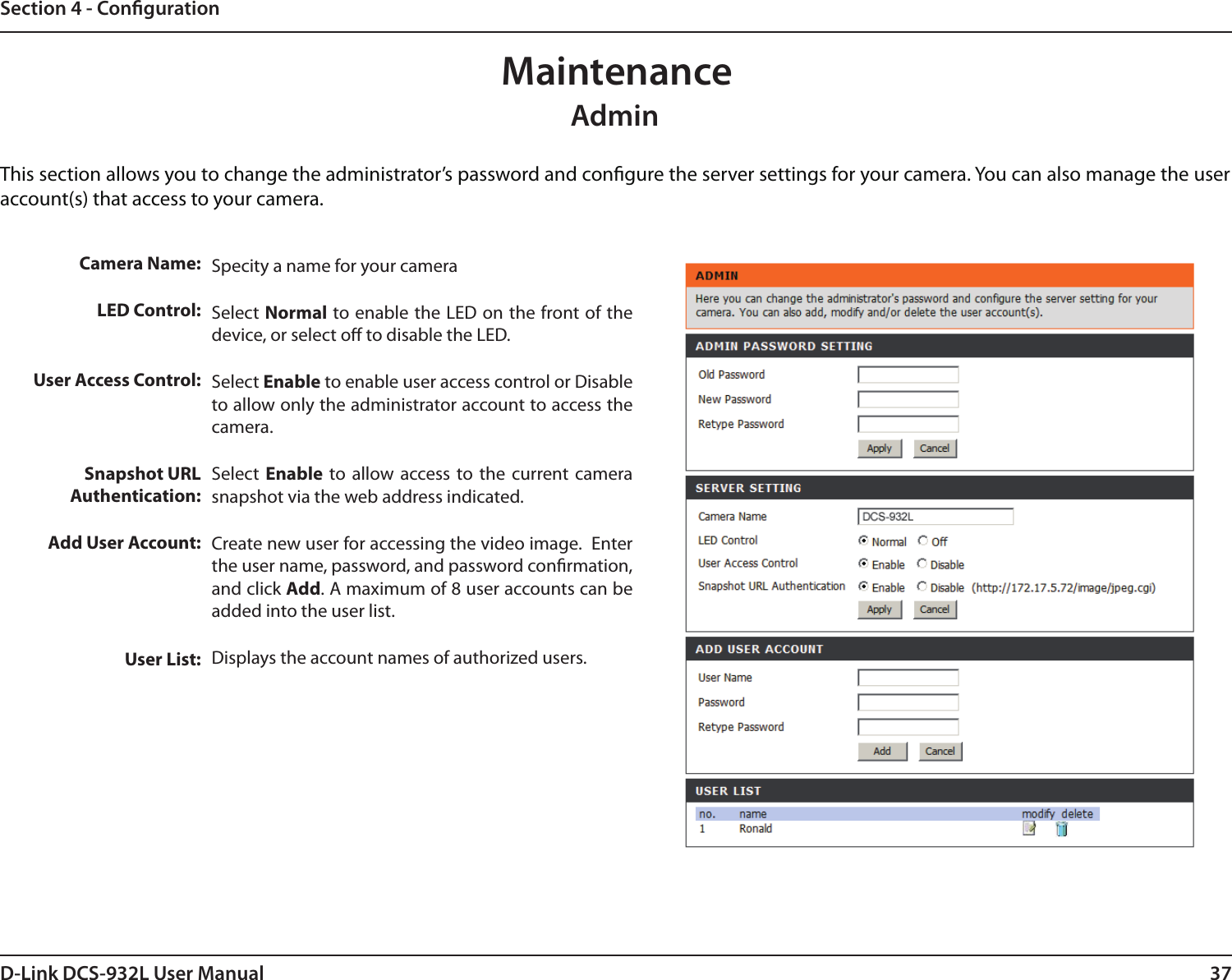
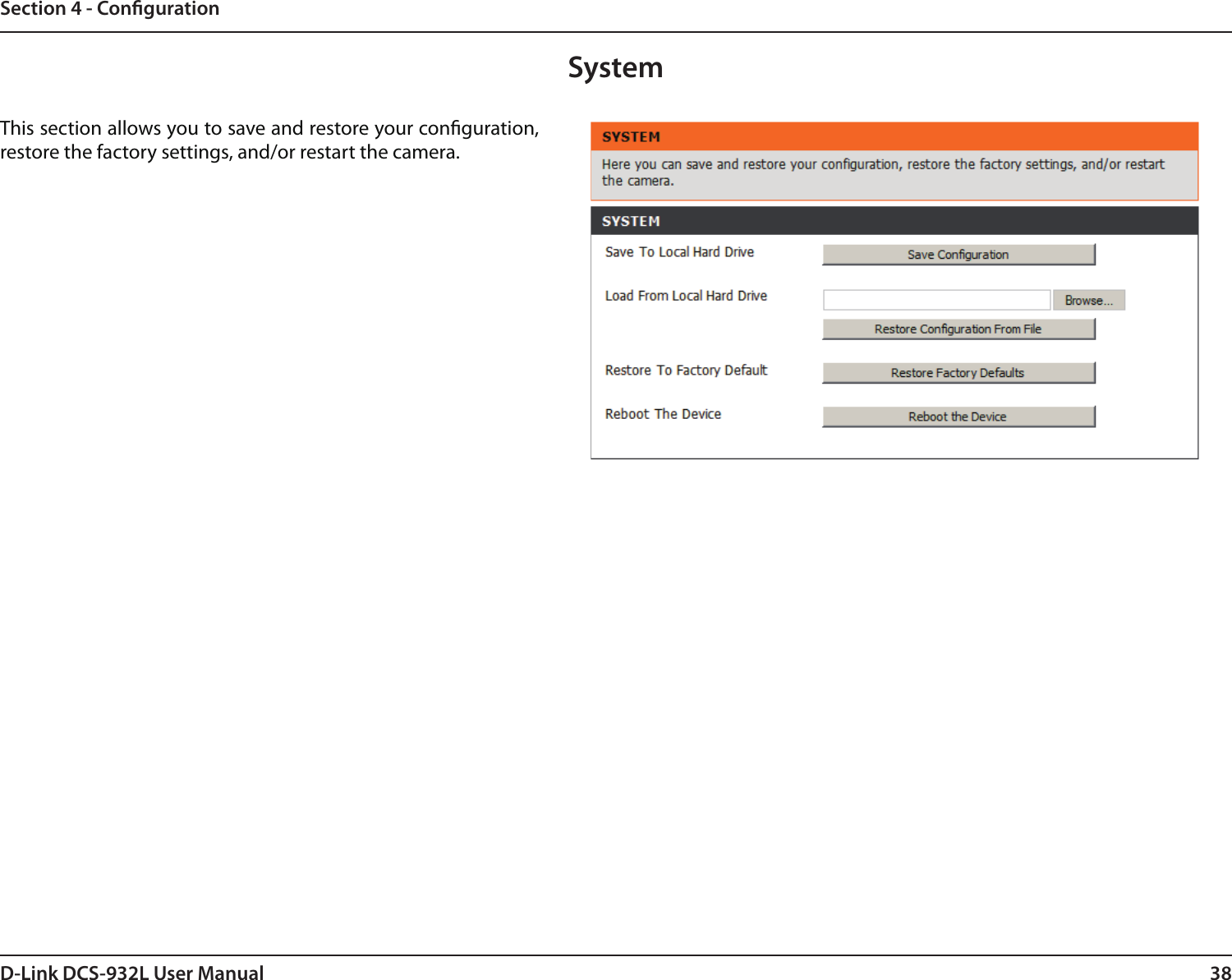
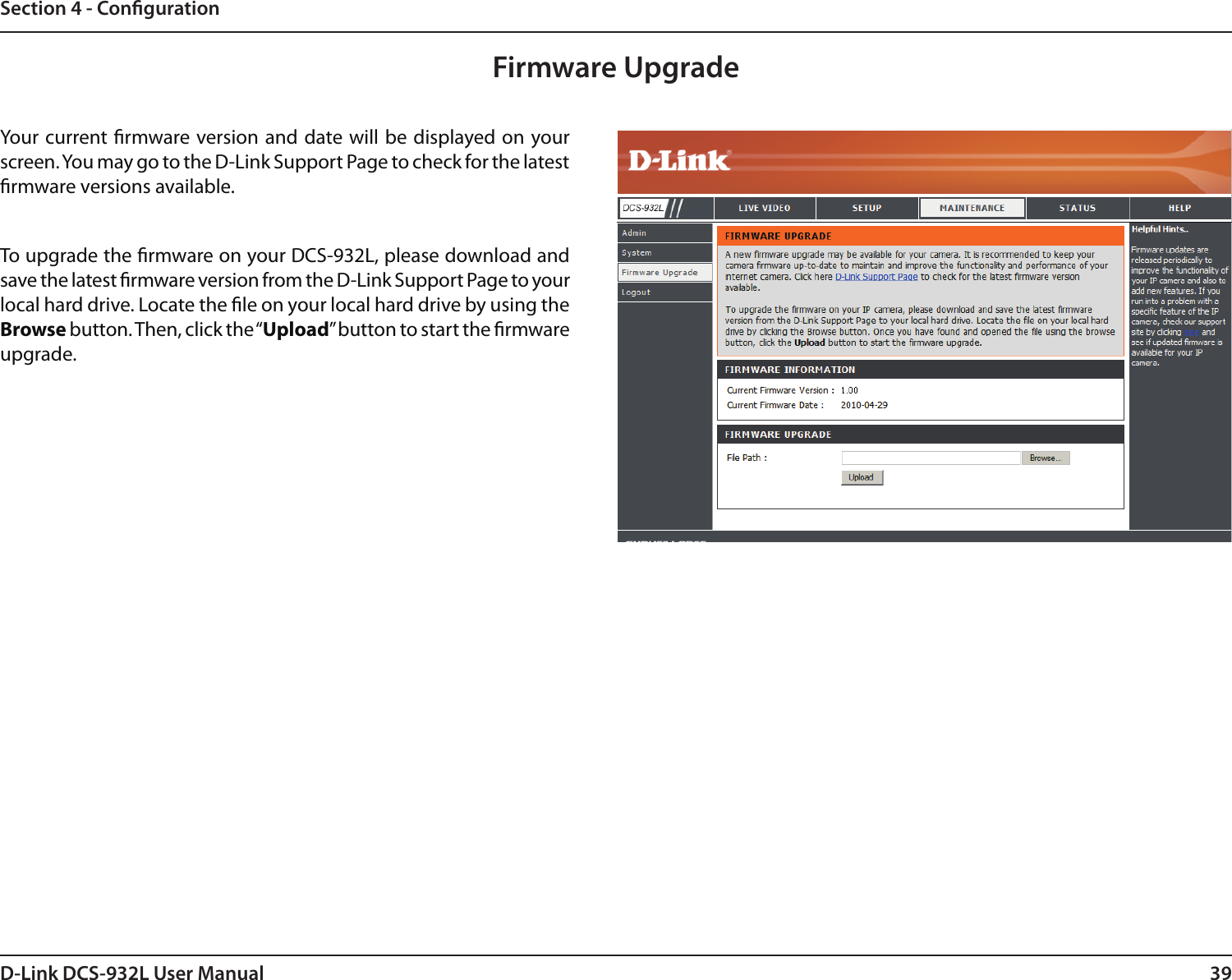
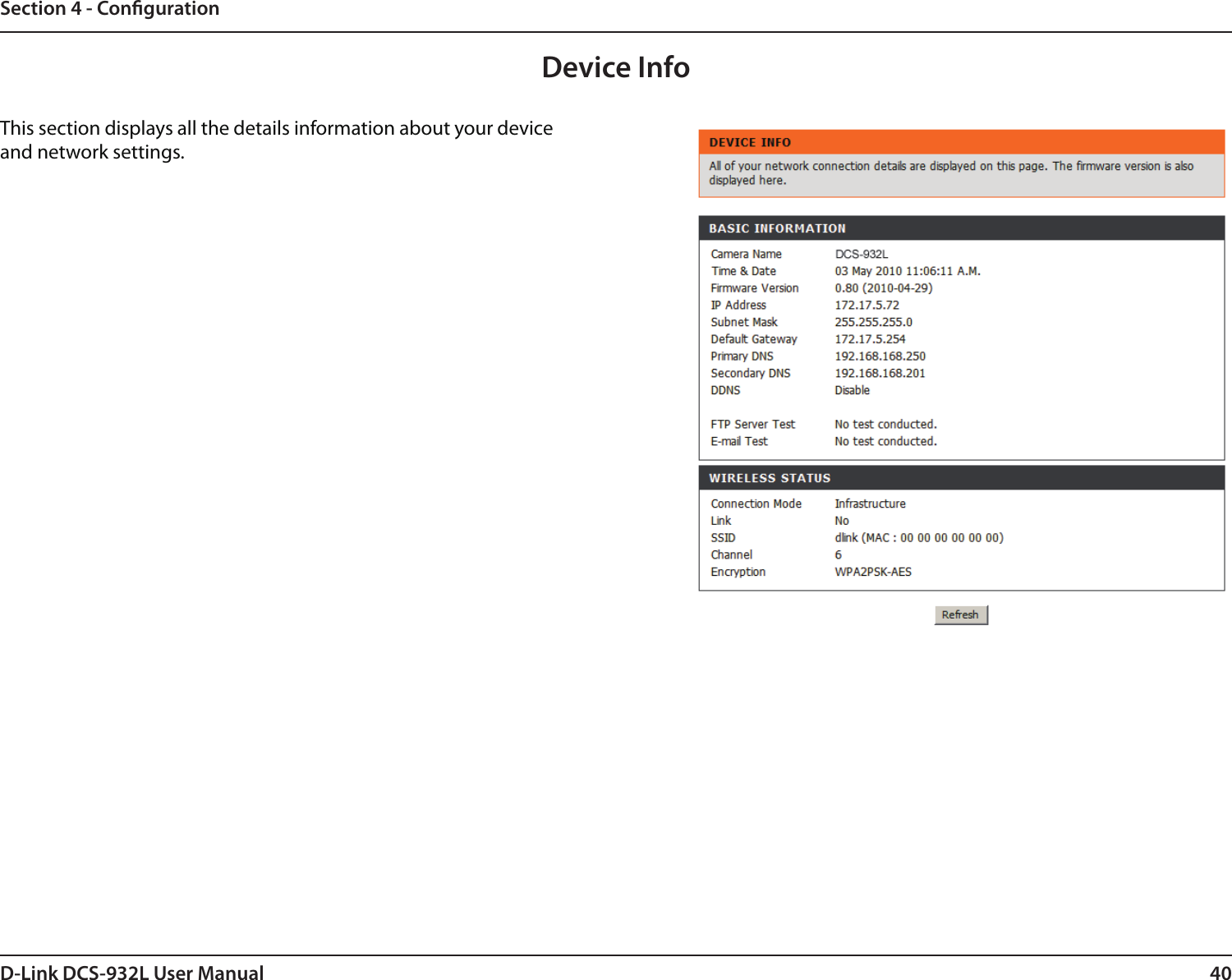
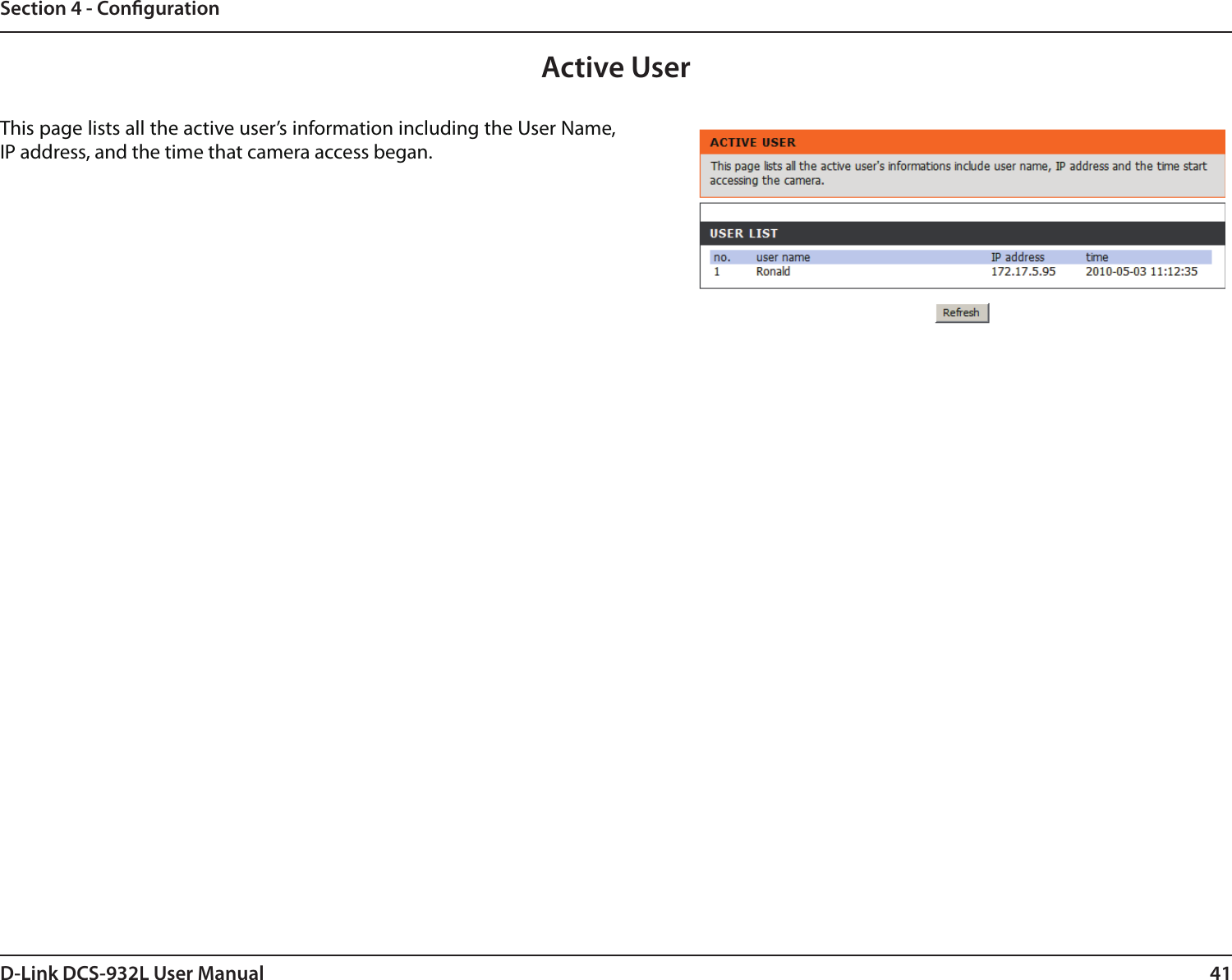
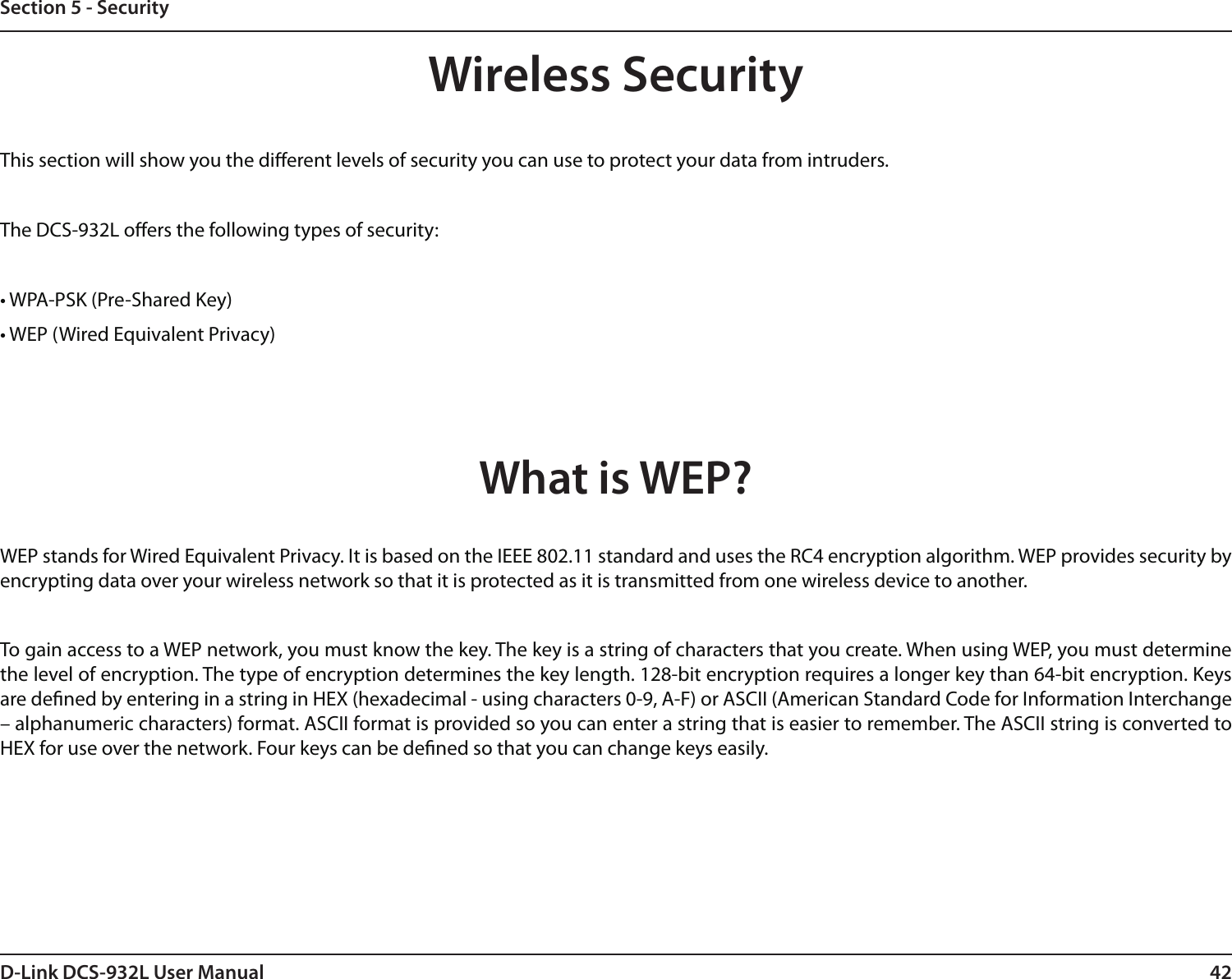
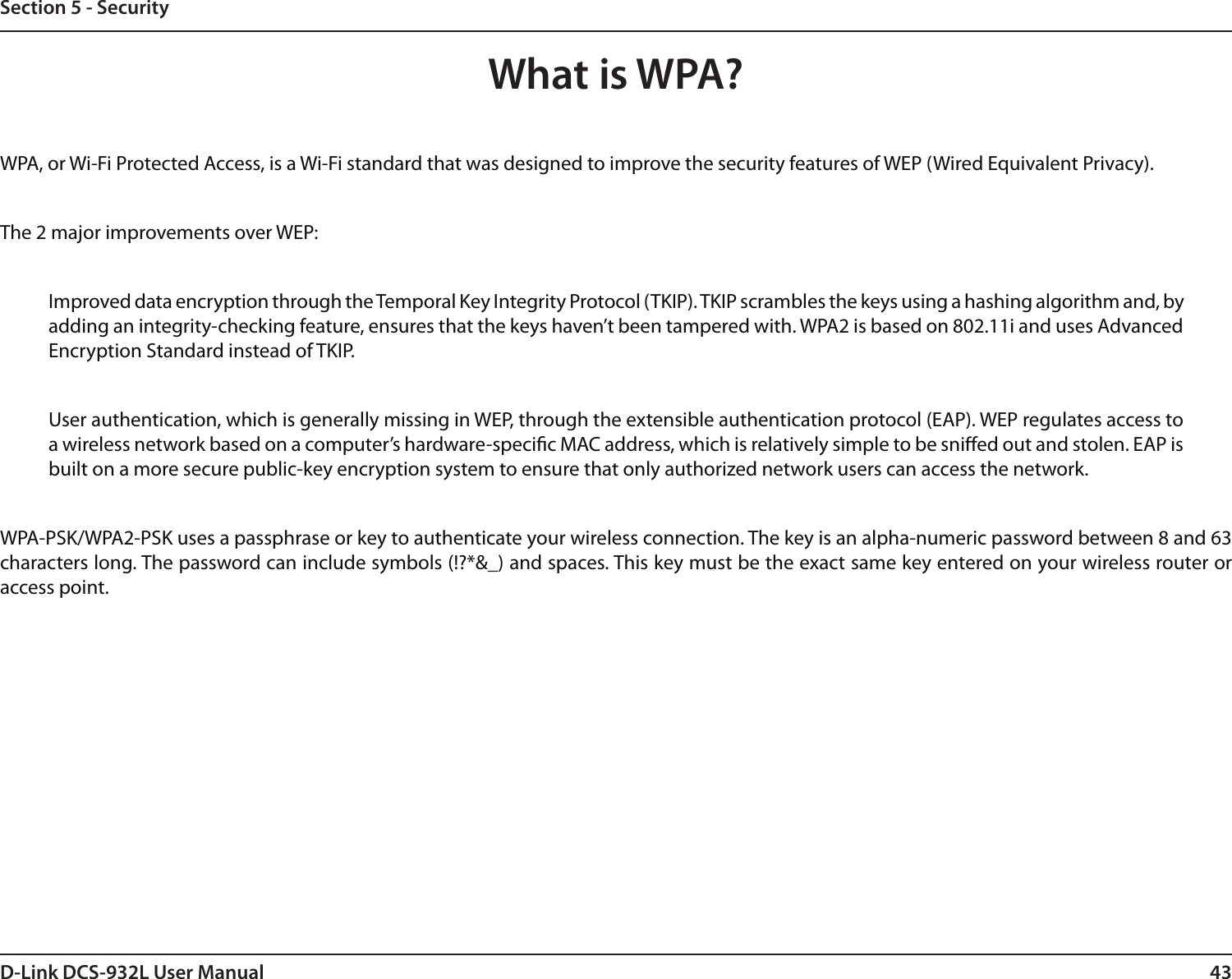
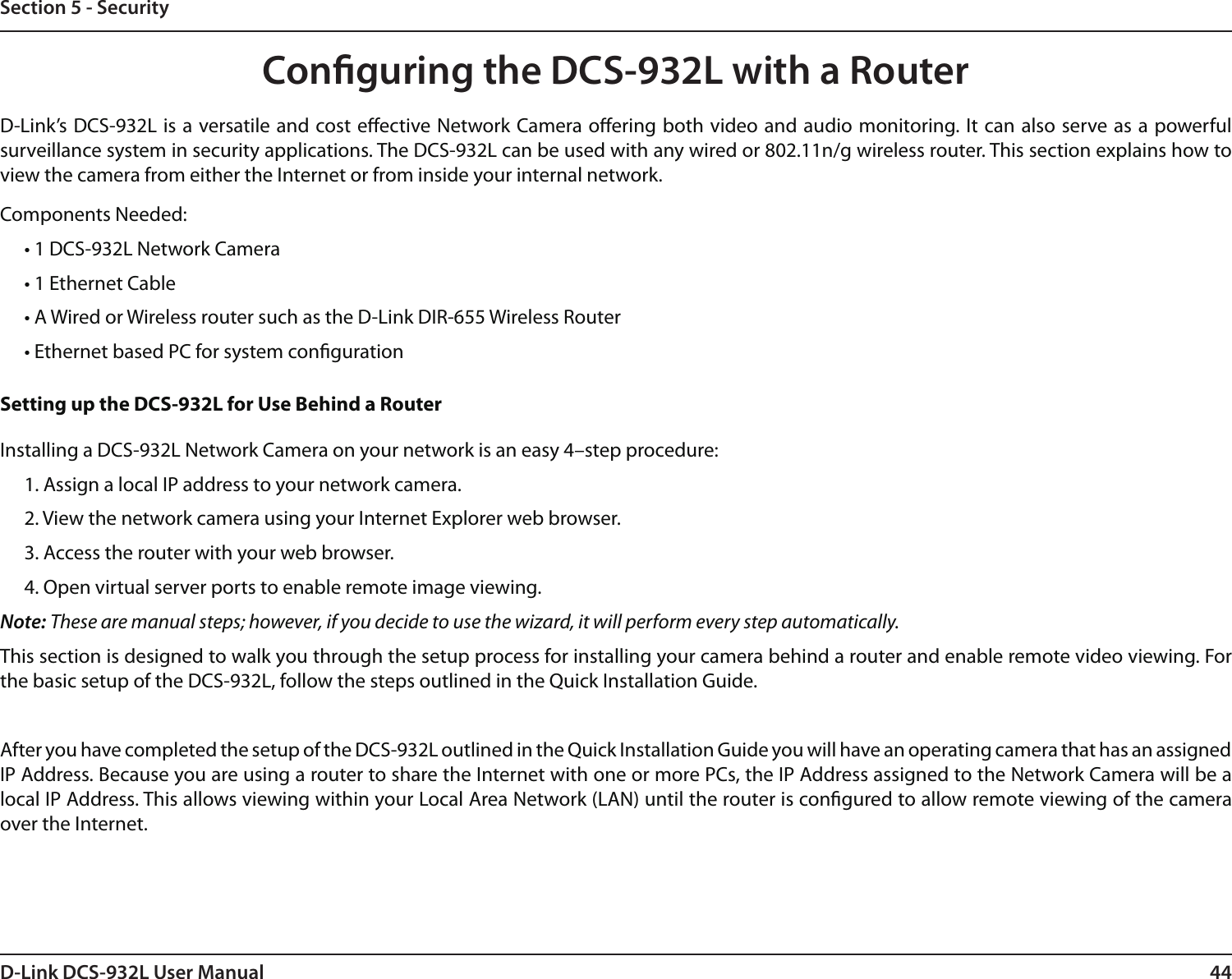
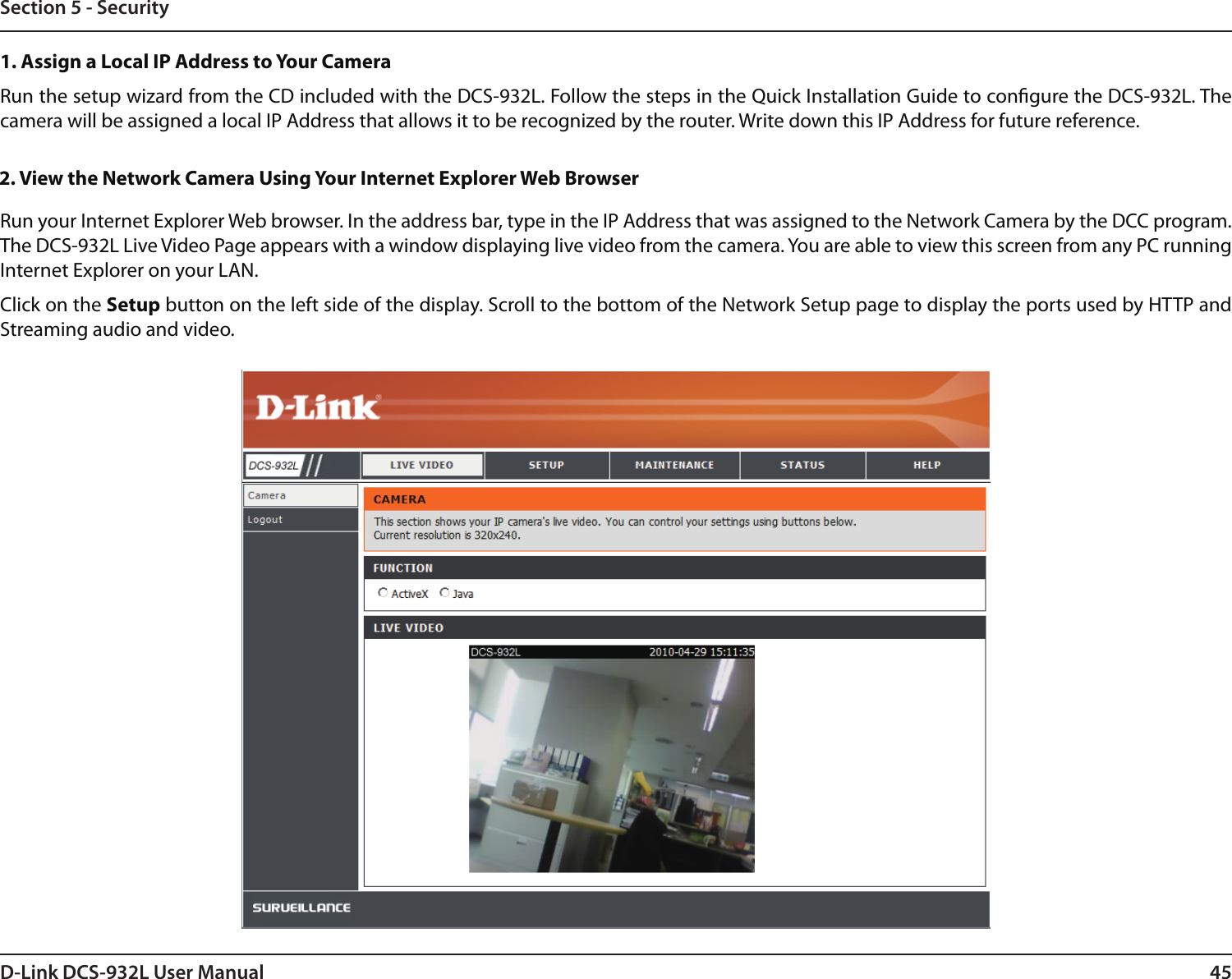
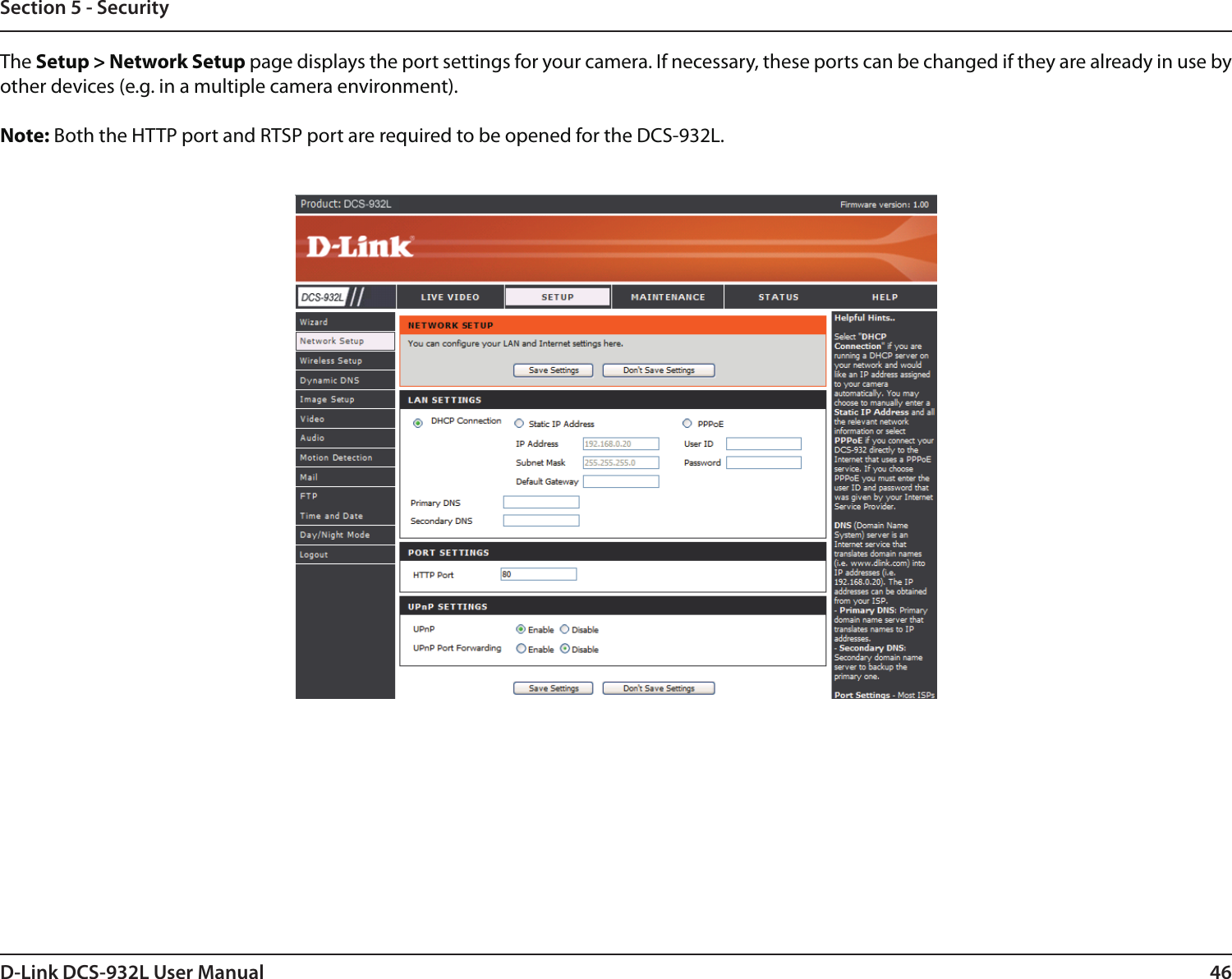
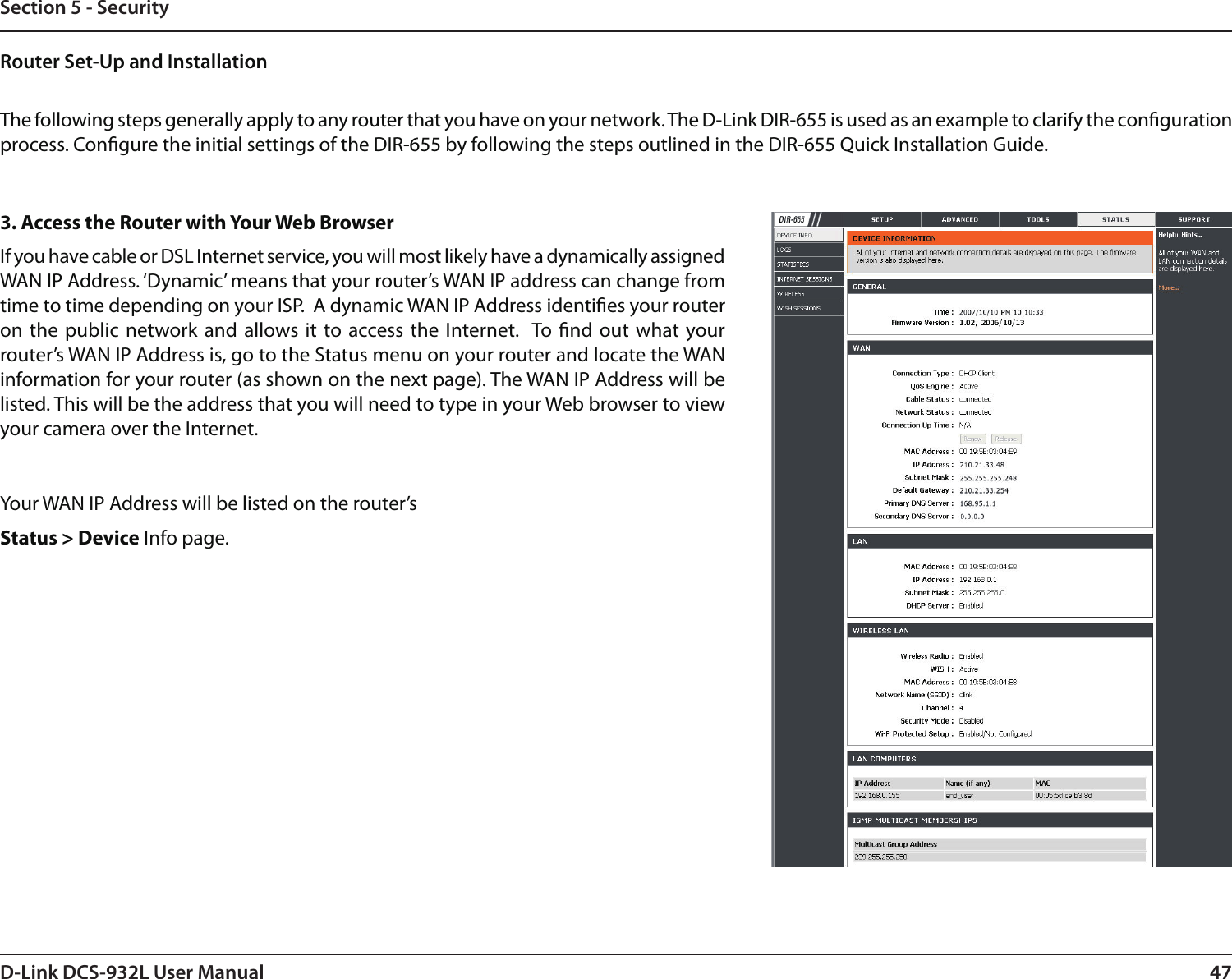
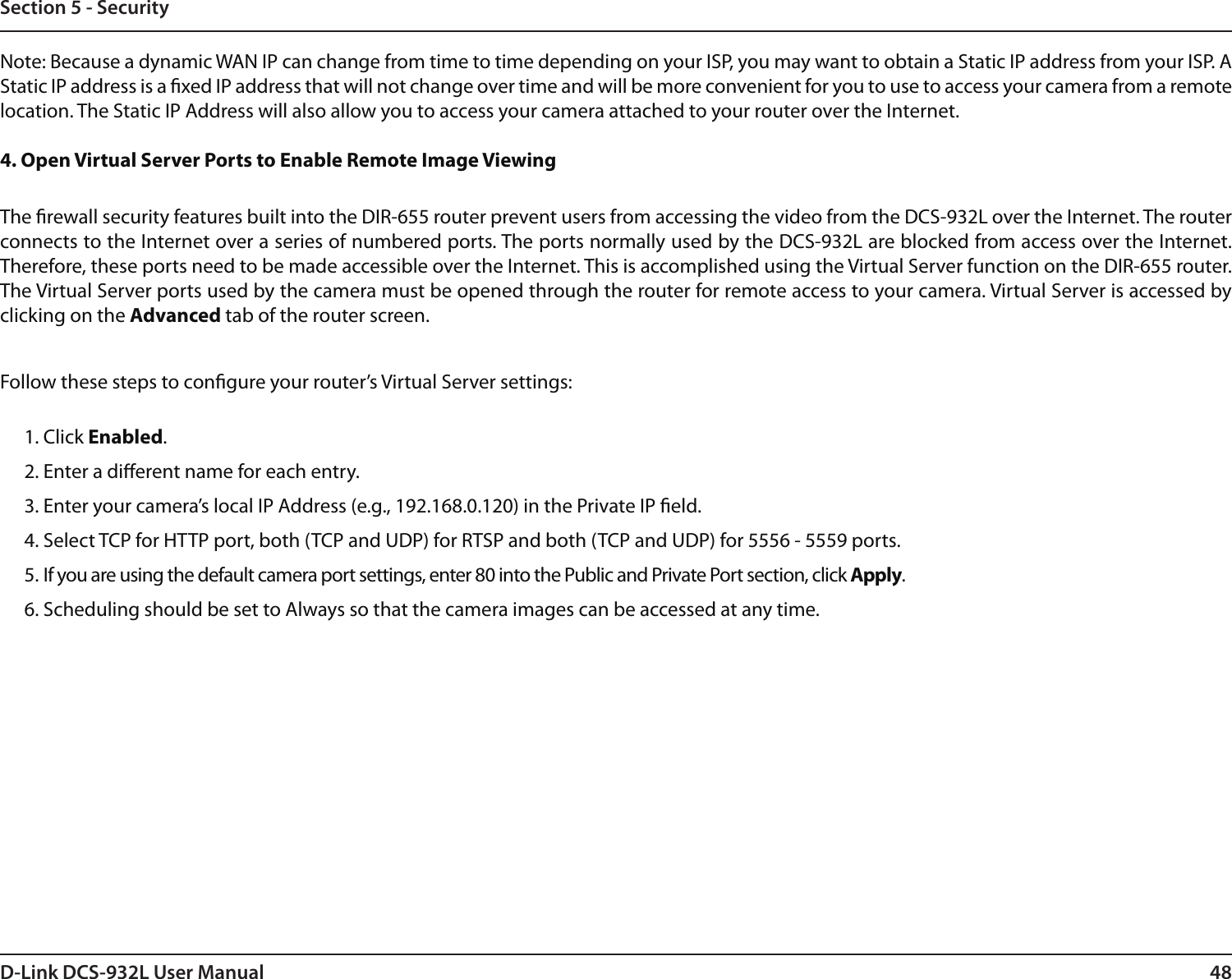
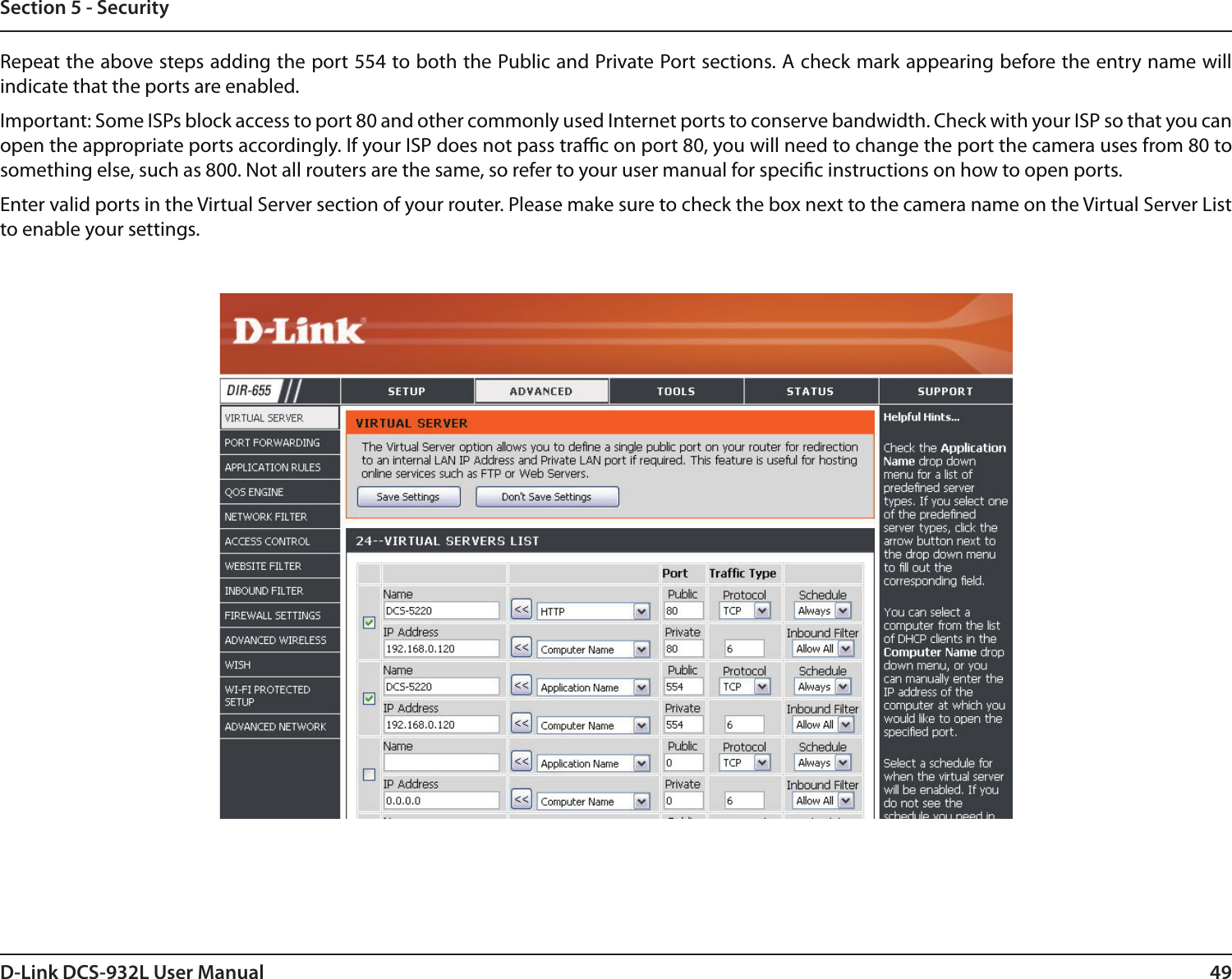
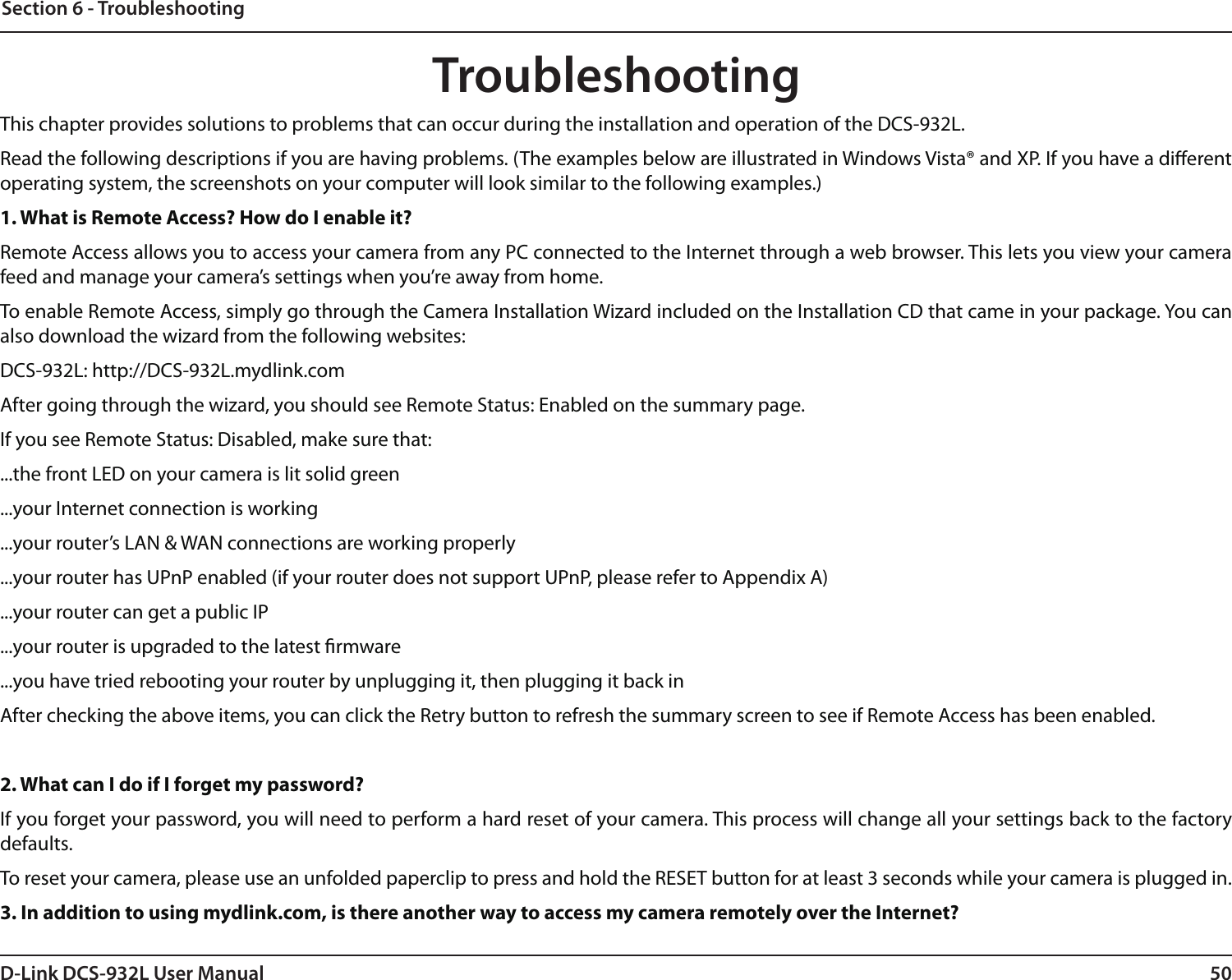
![51D-Link DCS-932L User ManualSection 6 - TroubleshootingYes, you can access your camera over the Internet through the following URL after successfully installing your camera through the Camera Installation Wizard:http://[mydlink No.].mydlink.comFor example, if your camera’s mydlink No. was 12345678, you would be able to access your camera remotely by opening your web browser and going to http://12345678.mydlink.comThis URL will open a webpage where you will be asked to log in by entering your camera’s password. After entering your password, your camera’s Live View window will open, and you will be able to congure your camera as well.4. Why does the LED not light up?The power supply might be faulty. Conrm that you are using the provided DC 5V power supply for this network camera. Verify that the power supply is correctly connected. If the camera is functioning normally, the LED may have been disabled. See page 36 for information about how to enable the LED.5. Why is the camera’s network connection unreliable?There might be a problem with the network cable. To conrm that the cables are working, PING the address of a known device on the network. If the cabling is OK and your network is reachable, you should receive a reply similar to the following (…bytes = 32 time = 2 ms). Another possible problem may be that the network device such as a hub or switch utilized by the Network Camera is not functioning properly. Please conrm the power for the devices are well connected and functioning properly.6. Why does the Network Camera work locally but not remotely?This might be caused by the rewall protection. Check the Internet rewall with your system administrator. The rewall may need to have some settings changed in order for the Network Camera to be accessible outside your local LAN. For more information, please refer to the section about installing your camera behind a router. Make sure that the Network Camera isn’t conicting with any Web server you may have running on your network. The default router setting might be a possible reason. Check that the conguration of the router settings allow the Network Camera to be accessed outside your local LAN.](https://usermanual.wiki/D-Link/CS932LA1.DCS-932L-UserMan-2-2011-01-27/User-Guide-1411492-Page-36.png)
